Get 20% off Images & Videos—Ends Sunday! Use code: FLASH20%
Quick filters:
Catacomb priscilla Stock Photos and Images
 . Virgin and Child with Balaam the Prophet . Image of the Virgin Mary, mother of Jesus, in the Catacomb of Priscilla in Rome. It depicts her nursing the Infant Jesus. This is earliest known image of Mary and the Infant Jesus independent of the Magi episode. The figure at the left appears to be the prophet Balaam pointing to a star (outside the frame). The star is from Numbers 24:17. late 2nd century 386 Madonna catacomb Stock Photohttps://www.alamy.com/image-license-details/?v=1https://www.alamy.com/virgin-and-child-with-balaam-the-prophet-image-of-the-virgin-mary-mother-of-jesus-in-the-catacomb-of-priscilla-in-rome-it-depicts-her-nursing-the-infant-jesus-this-is-earliest-known-image-of-mary-and-the-infant-jesus-independent-of-the-magi-episode-the-figure-at-the-left-appears-to-be-the-prophet-balaam-pointing-to-a-star-outside-the-frame-the-star-is-from-numbers-2417-late-2nd-century-386-madonna-catacomb-image187816996.html
. Virgin and Child with Balaam the Prophet . Image of the Virgin Mary, mother of Jesus, in the Catacomb of Priscilla in Rome. It depicts her nursing the Infant Jesus. This is earliest known image of Mary and the Infant Jesus independent of the Magi episode. The figure at the left appears to be the prophet Balaam pointing to a star (outside the frame). The star is from Numbers 24:17. late 2nd century 386 Madonna catacomb Stock Photohttps://www.alamy.com/image-license-details/?v=1https://www.alamy.com/virgin-and-child-with-balaam-the-prophet-image-of-the-virgin-mary-mother-of-jesus-in-the-catacomb-of-priscilla-in-rome-it-depicts-her-nursing-the-infant-jesus-this-is-earliest-known-image-of-mary-and-the-infant-jesus-independent-of-the-magi-episode-the-figure-at-the-left-appears-to-be-the-prophet-balaam-pointing-to-a-star-outside-the-frame-the-star-is-from-numbers-2417-late-2nd-century-386-madonna-catacomb-image187816996.htmlRMMWFPDT–. Virgin and Child with Balaam the Prophet . Image of the Virgin Mary, mother of Jesus, in the Catacomb of Priscilla in Rome. It depicts her nursing the Infant Jesus. This is earliest known image of Mary and the Infant Jesus independent of the Magi episode. The figure at the left appears to be the prophet Balaam pointing to a star (outside the frame). The star is from Numbers 24:17. late 2nd century 386 Madonna catacomb
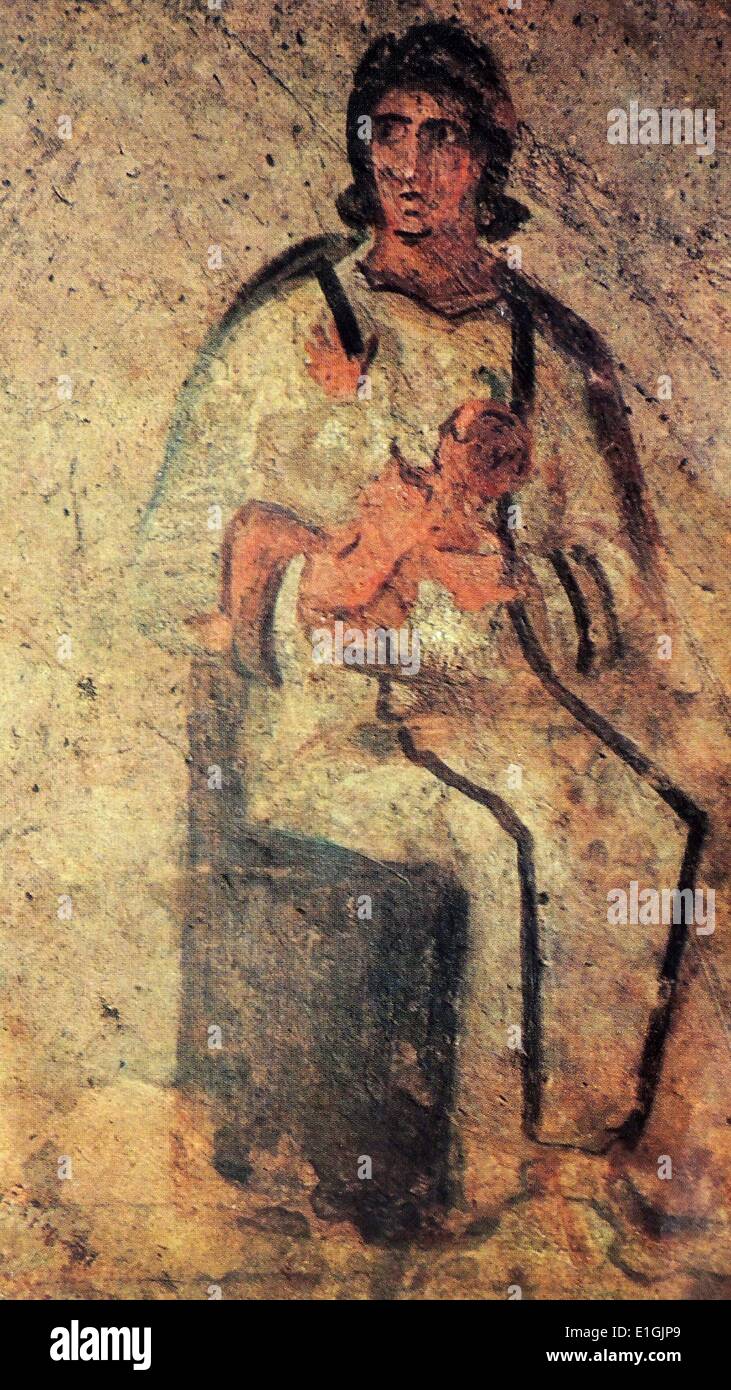 The Catacomb of Priscilla on the Via Salaria in Rome, Italy, is situated in what was a quarry in Roman times. This quarry was used for Christian burials from the late 2nd century through the 4th century. Some of the walls and ceilings display fine decorations illustrating Biblical scenes. Madonna and Child Stock Photohttps://www.alamy.com/image-license-details/?v=1https://www.alamy.com/the-catacomb-of-priscilla-on-the-via-salaria-in-rome-italy-is-situated-image69822097.html
The Catacomb of Priscilla on the Via Salaria in Rome, Italy, is situated in what was a quarry in Roman times. This quarry was used for Christian burials from the late 2nd century through the 4th century. Some of the walls and ceilings display fine decorations illustrating Biblical scenes. Madonna and Child Stock Photohttps://www.alamy.com/image-license-details/?v=1https://www.alamy.com/the-catacomb-of-priscilla-on-the-via-salaria-in-rome-italy-is-situated-image69822097.htmlRME1GJP9–The Catacomb of Priscilla on the Via Salaria in Rome, Italy, is situated in what was a quarry in Roman times. This quarry was used for Christian burials from the late 2nd century through the 4th century. Some of the walls and ceilings display fine decorations illustrating Biblical scenes. Madonna and Child
 Good Shepherd Catacomb of Priscilla Stock Photohttps://www.alamy.com/image-license-details/?v=1https://www.alamy.com/stock-photo-good-shepherd-catacomb-of-priscilla-132461258.html
Good Shepherd Catacomb of Priscilla Stock Photohttps://www.alamy.com/image-license-details/?v=1https://www.alamy.com/stock-photo-good-shepherd-catacomb-of-priscilla-132461258.htmlRMHKE3K6–Good Shepherd Catacomb of Priscilla
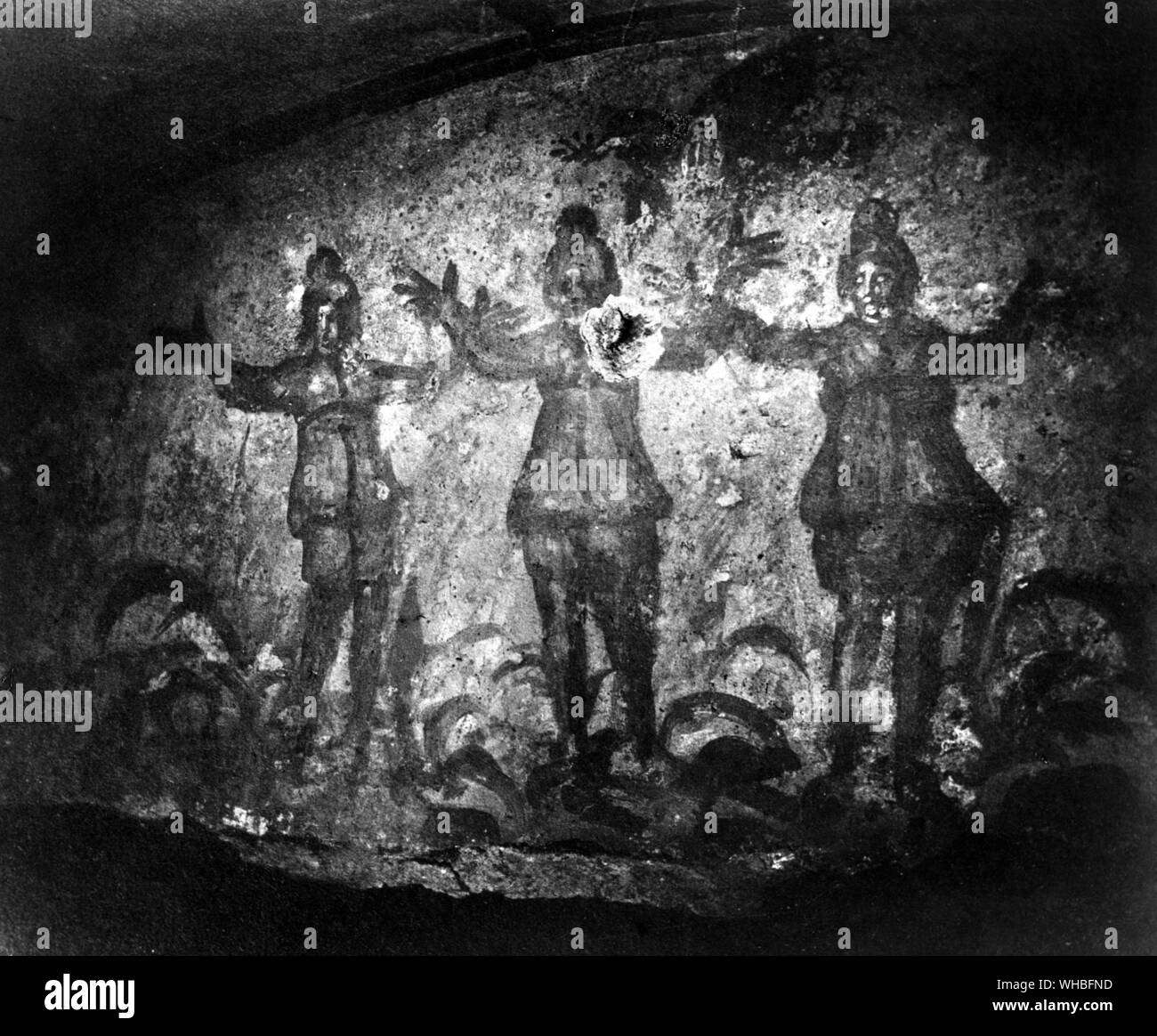 Rome Catacomb of Priscilla. The 3 children in the fiery furnace. Third century painting on the wall Stock Photohttps://www.alamy.com/image-license-details/?v=1https://www.alamy.com/rome-catacomb-of-priscilla-the-3-children-in-the-fiery-furnace-third-century-painting-on-the-wall-image268858505.html
Rome Catacomb of Priscilla. The 3 children in the fiery furnace. Third century painting on the wall Stock Photohttps://www.alamy.com/image-license-details/?v=1https://www.alamy.com/rome-catacomb-of-priscilla-the-3-children-in-the-fiery-furnace-third-century-painting-on-the-wall-image268858505.htmlRMWHBFND–Rome Catacomb of Priscilla. The 3 children in the fiery furnace. Third century painting on the wall
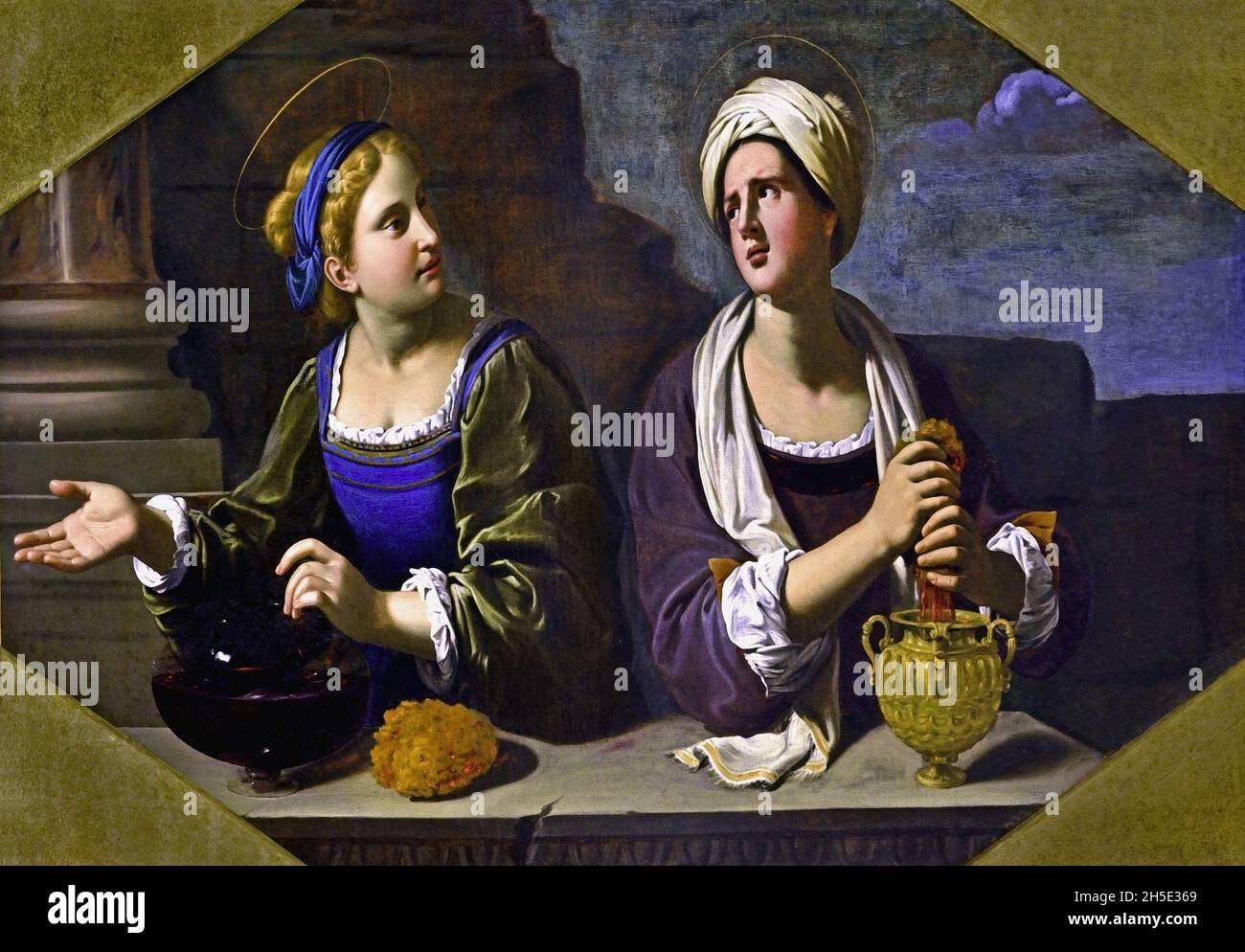 Praxedes was a Roman maiden, the sister of Pudentiana. by Antiveduto, GrammaticaItaly, 1571 – 1626 was a proto-Baroque Italian painter, active near Rome. ( When the Emperor Marcus Antoninus was hunting down Christians, they sought them out to relieve them with money, care, comfort and every charitable aid. The sisters were buried in the Catacomb of Priscilla. ) Stock Photohttps://www.alamy.com/image-license-details/?v=1https://www.alamy.com/praxedes-was-a-roman-maiden-the-sister-of-pudentiana-by-antiveduto-grammaticaitaly-1571-1626-was-a-proto-baroque-italian-painter-active-near-rome-when-the-emperor-marcus-antoninus-was-hunting-down-christians-they-sought-them-out-to-relieve-them-with-money-care-comfort-and-every-charitable-aid-the-sisters-were-buried-in-the-catacomb-of-priscilla-image450852705.html
Praxedes was a Roman maiden, the sister of Pudentiana. by Antiveduto, GrammaticaItaly, 1571 – 1626 was a proto-Baroque Italian painter, active near Rome. ( When the Emperor Marcus Antoninus was hunting down Christians, they sought them out to relieve them with money, care, comfort and every charitable aid. The sisters were buried in the Catacomb of Priscilla. ) Stock Photohttps://www.alamy.com/image-license-details/?v=1https://www.alamy.com/praxedes-was-a-roman-maiden-the-sister-of-pudentiana-by-antiveduto-grammaticaitaly-1571-1626-was-a-proto-baroque-italian-painter-active-near-rome-when-the-emperor-marcus-antoninus-was-hunting-down-christians-they-sought-them-out-to-relieve-them-with-money-care-comfort-and-every-charitable-aid-the-sisters-were-buried-in-the-catacomb-of-priscilla-image450852705.htmlRM2H5E369–Praxedes was a Roman maiden, the sister of Pudentiana. by Antiveduto, GrammaticaItaly, 1571 – 1626 was a proto-Baroque Italian painter, active near Rome. ( When the Emperor Marcus Antoninus was hunting down Christians, they sought them out to relieve them with money, care, comfort and every charitable aid. The sisters were buried in the Catacomb of Priscilla. )
 The Saints Praxedes, Pudentiana and Paul the Apostle, mural painting at the Catacomb of Priscilla, Rome, Italy Stock Photohttps://www.alamy.com/image-license-details/?v=1https://www.alamy.com/stock-photo-the-saints-praxedes-pudentiana-and-paul-the-apostle-mural-painting-175211998.html
The Saints Praxedes, Pudentiana and Paul the Apostle, mural painting at the Catacomb of Priscilla, Rome, Italy Stock Photohttps://www.alamy.com/image-license-details/?v=1https://www.alamy.com/stock-photo-the-saints-praxedes-pudentiana-and-paul-the-apostle-mural-painting-175211998.htmlRMM51GKA–The Saints Praxedes, Pudentiana and Paul the Apostle, mural painting at the Catacomb of Priscilla, Rome, Italy
 For the celebration of the feast of all the dead Pope Francis Celebrates Mass in the Catacombs of Priscilla in Rome, Italy on November 2, 2019. It was the first time in his life that pope Francis visits a catacomb. The catacombs were used for early Christians burials from the late 2nd-4th Century. The labyrinthine cemetery complex stretching for 13 kilometers over several levels underneath northern Rome is known as the 'Queen of the catacombs' because it features burial chambers of popes and a tiny, delicate fresco of the Madonna nursing Jesus dating from around 230-240 A.D. Photo by ABACAPRES Stock Photohttps://www.alamy.com/image-license-details/?v=1https://www.alamy.com/for-the-celebration-of-the-feast-of-all-the-dead-pope-francis-celebrates-mass-in-the-catacombs-of-priscilla-in-rome-italy-on-november-2-2019-it-was-the-first-time-in-his-life-that-pope-francis-visits-a-catacomb-the-catacombs-were-used-for-early-christians-burials-from-the-late-2nd-4thcentury-the-labyrinthine-cemetery-complex-stretching-for-13-kilometers-over-several-levels-underneath-northern-rome-is-known-as-the-queen-of-the-catacombs-because-it-features-burial-chambers-of-popes-and-a-tiny-delicate-fresco-of-the-madonna-nursing-jesus-dating-from-around-230-240-ad-photo-by-abacapres-image387750337.html
For the celebration of the feast of all the dead Pope Francis Celebrates Mass in the Catacombs of Priscilla in Rome, Italy on November 2, 2019. It was the first time in his life that pope Francis visits a catacomb. The catacombs were used for early Christians burials from the late 2nd-4th Century. The labyrinthine cemetery complex stretching for 13 kilometers over several levels underneath northern Rome is known as the 'Queen of the catacombs' because it features burial chambers of popes and a tiny, delicate fresco of the Madonna nursing Jesus dating from around 230-240 A.D. Photo by ABACAPRES Stock Photohttps://www.alamy.com/image-license-details/?v=1https://www.alamy.com/for-the-celebration-of-the-feast-of-all-the-dead-pope-francis-celebrates-mass-in-the-catacombs-of-priscilla-in-rome-italy-on-november-2-2019-it-was-the-first-time-in-his-life-that-pope-francis-visits-a-catacomb-the-catacombs-were-used-for-early-christians-burials-from-the-late-2nd-4thcentury-the-labyrinthine-cemetery-complex-stretching-for-13-kilometers-over-several-levels-underneath-northern-rome-is-known-as-the-queen-of-the-catacombs-because-it-features-burial-chambers-of-popes-and-a-tiny-delicate-fresco-of-the-madonna-nursing-jesus-dating-from-around-230-240-ad-photo-by-abacapres-image387750337.htmlRM2DERFE9–For the celebration of the feast of all the dead Pope Francis Celebrates Mass in the Catacombs of Priscilla in Rome, Italy on November 2, 2019. It was the first time in his life that pope Francis visits a catacomb. The catacombs were used for early Christians burials from the late 2nd-4th Century. The labyrinthine cemetery complex stretching for 13 kilometers over several levels underneath northern Rome is known as the 'Queen of the catacombs' because it features burial chambers of popes and a tiny, delicate fresco of the Madonna nursing Jesus dating from around 230-240 A.D. Photo by ABACAPRES
 French 19th century illustration of Saint Philomena a young consecrated virgin whose remains were discovered on May 24/25 1802 in the Catacomb of Priscilla. Stock Photohttps://www.alamy.com/image-license-details/?v=1https://www.alamy.com/french-19th-century-illustration-of-saint-philomena-a-young-consecrated-virgin-whose-remains-were-discovered-on-may-2425-1802-in-the-catacomb-of-priscilla-image186363201.html
French 19th century illustration of Saint Philomena a young consecrated virgin whose remains were discovered on May 24/25 1802 in the Catacomb of Priscilla. Stock Photohttps://www.alamy.com/image-license-details/?v=1https://www.alamy.com/french-19th-century-illustration-of-saint-philomena-a-young-consecrated-virgin-whose-remains-were-discovered-on-may-2425-1802-in-the-catacomb-of-priscilla-image186363201.htmlRMMR5G4H–French 19th century illustration of Saint Philomena a young consecrated virgin whose remains were discovered on May 24/25 1802 in the Catacomb of Priscilla.
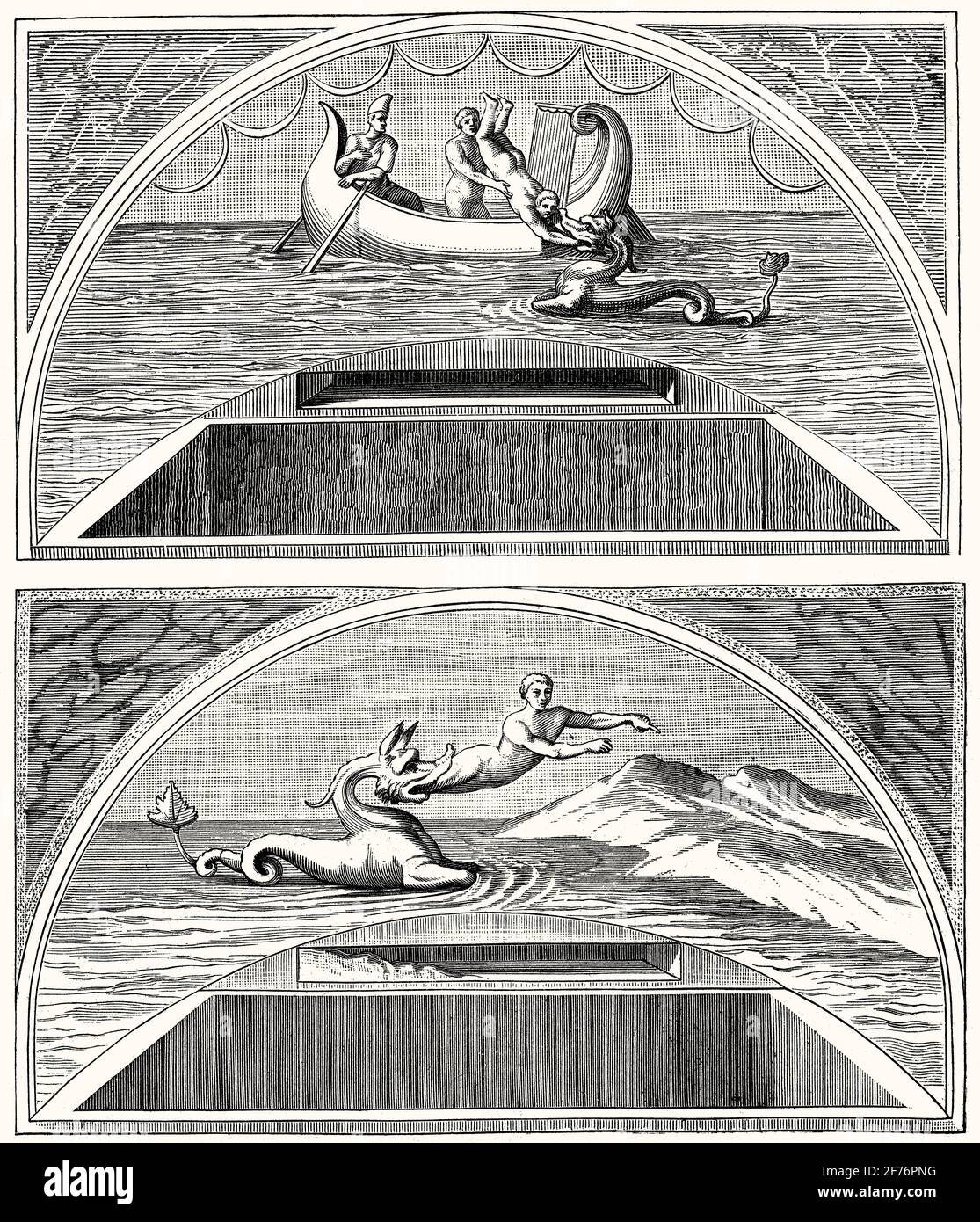 Prophet Jonah being thrown into the Sea, Catacomb of Priscilla, Rome, Italy Stock Photohttps://www.alamy.com/image-license-details/?v=1https://www.alamy.com/prophet-jonah-being-thrown-into-the-sea-catacomb-of-priscilla-rome-italy-image417500988.html
Prophet Jonah being thrown into the Sea, Catacomb of Priscilla, Rome, Italy Stock Photohttps://www.alamy.com/image-license-details/?v=1https://www.alamy.com/prophet-jonah-being-thrown-into-the-sea-catacomb-of-priscilla-rome-italy-image417500988.htmlRM2F76PNG–Prophet Jonah being thrown into the Sea, Catacomb of Priscilla, Rome, Italy
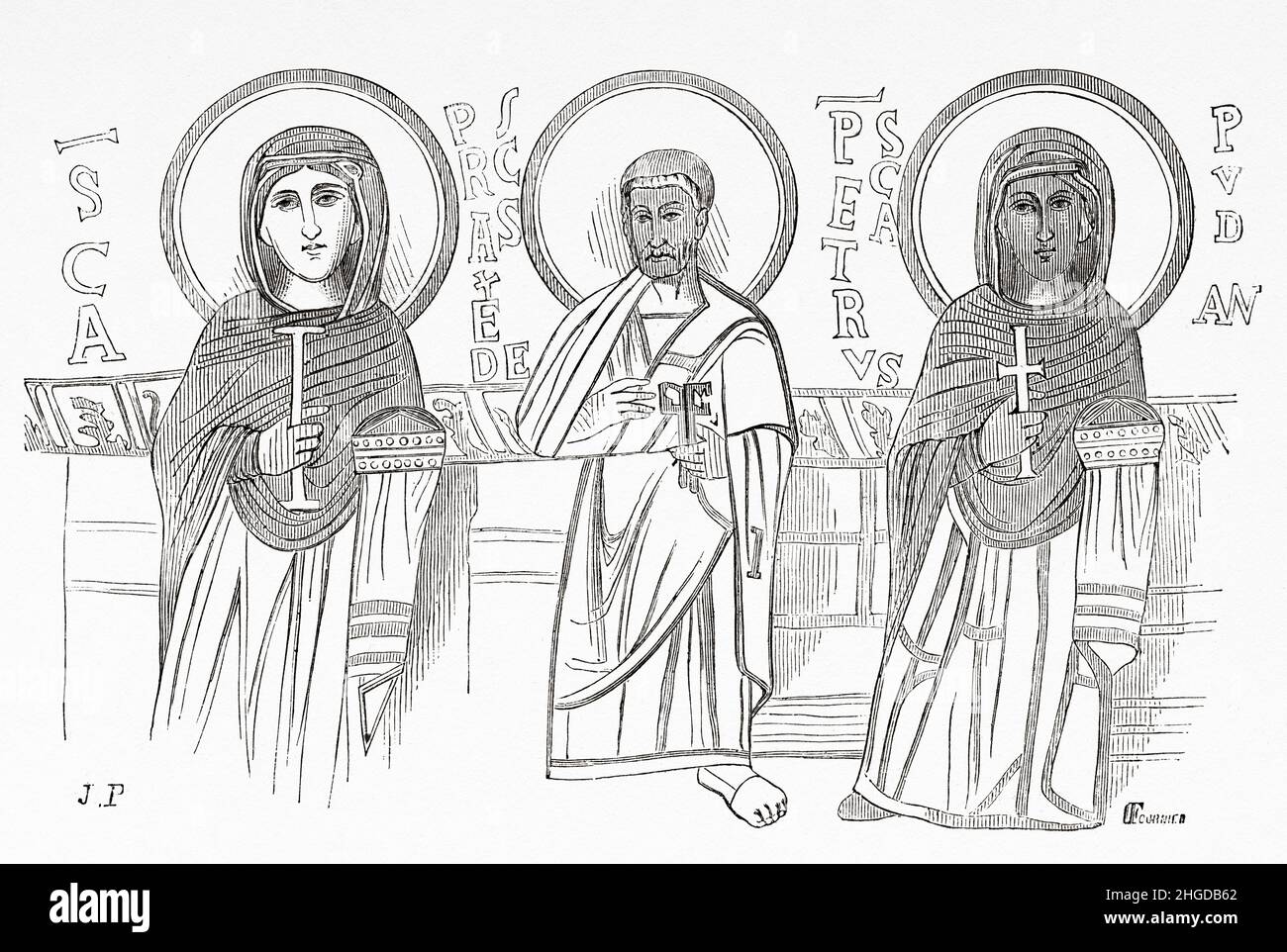 The Saints Praxedes, Pudentiana and Paul the Apostle, mural painting at the Catacomb of Priscilla, Rome. Italy, Europe. Old 19th century engraved illustration from Trip to Rome by Francis Wey, Le Tour du Monde 1870 Stock Photohttps://www.alamy.com/image-license-details/?v=1https://www.alamy.com/the-saints-praxedes-pudentiana-and-paul-the-apostle-mural-painting-at-the-catacomb-of-priscilla-rome-italy-europe-old-19th-century-engraved-illustration-from-trip-to-rome-by-francis-wey-le-tour-du-monde-1870-image457598234.html
The Saints Praxedes, Pudentiana and Paul the Apostle, mural painting at the Catacomb of Priscilla, Rome. Italy, Europe. Old 19th century engraved illustration from Trip to Rome by Francis Wey, Le Tour du Monde 1870 Stock Photohttps://www.alamy.com/image-license-details/?v=1https://www.alamy.com/the-saints-praxedes-pudentiana-and-paul-the-apostle-mural-painting-at-the-catacomb-of-priscilla-rome-italy-europe-old-19th-century-engraved-illustration-from-trip-to-rome-by-francis-wey-le-tour-du-monde-1870-image457598234.htmlRM2HGDB62–The Saints Praxedes, Pudentiana and Paul the Apostle, mural painting at the Catacomb of Priscilla, Rome. Italy, Europe. Old 19th century engraved illustration from Trip to Rome by Francis Wey, Le Tour du Monde 1870
 Good Shepherd Catacomb of Priscilla Stock Photohttps://www.alamy.com/image-license-details/?v=1https://www.alamy.com/stock-photo-good-shepherd-catacomb-of-priscilla-139962050.html
Good Shepherd Catacomb of Priscilla Stock Photohttps://www.alamy.com/image-license-details/?v=1https://www.alamy.com/stock-photo-good-shepherd-catacomb-of-priscilla-139962050.htmlRMJ3KR0J–Good Shepherd Catacomb of Priscilla
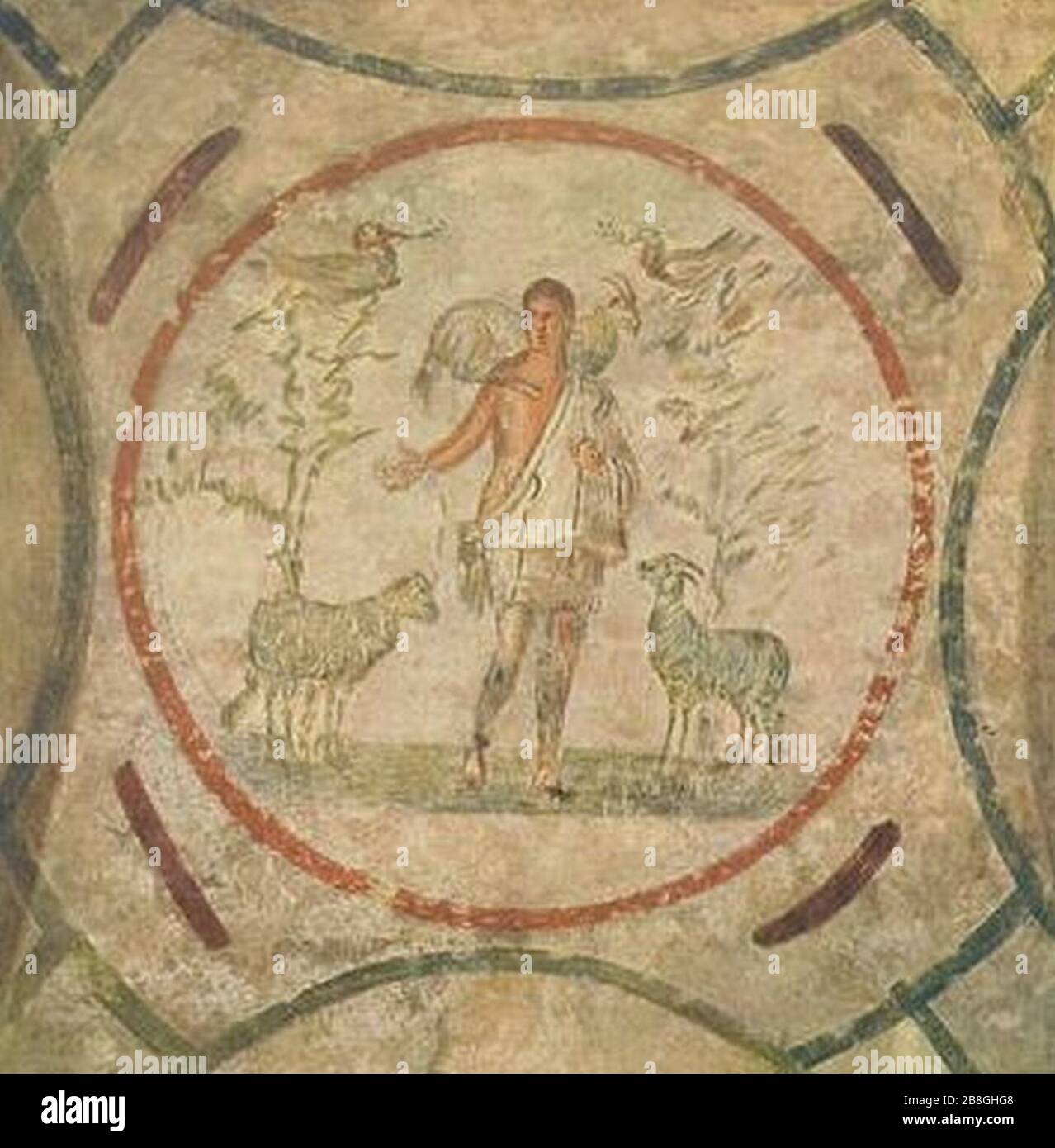 Good Shepherd Catacomb of Priscilla. Stock Photohttps://www.alamy.com/image-license-details/?v=1https://www.alamy.com/good-shepherd-catacomb-of-priscilla-image349489624.html
Good Shepherd Catacomb of Priscilla. Stock Photohttps://www.alamy.com/image-license-details/?v=1https://www.alamy.com/good-shepherd-catacomb-of-priscilla-image349489624.htmlRM2B8GHG8–Good Shepherd Catacomb of Priscilla.
 Catacomb of Priscilla, Città metropolitana di Roma Capitale, IT, Italy, Lazio, N 41 55' 48'', N 12 30' 31'', map, Cartascapes Map published in 2024. Explore Cartascapes, a map revealing Earth's diverse landscapes, cultures, and ecosystems. Journey through time and space, discovering the interconnectedness of our planet's past, present, and future. Stock Photohttps://www.alamy.com/image-license-details/?v=1https://www.alamy.com/catacomb-of-priscilla-citt-metropolitana-di-roma-capitale-it-italy-lazio-n-41-55-48-n-12-30-31-map-cartascapes-map-published-in-2024-explore-cartascapes-a-map-revealing-earths-diverse-landscapes-cultures-and-ecosystems-journey-through-time-and-space-discovering-the-interconnectedness-of-our-planets-past-present-and-future-image614659611.html
Catacomb of Priscilla, Città metropolitana di Roma Capitale, IT, Italy, Lazio, N 41 55' 48'', N 12 30' 31'', map, Cartascapes Map published in 2024. Explore Cartascapes, a map revealing Earth's diverse landscapes, cultures, and ecosystems. Journey through time and space, discovering the interconnectedness of our planet's past, present, and future. Stock Photohttps://www.alamy.com/image-license-details/?v=1https://www.alamy.com/catacomb-of-priscilla-citt-metropolitana-di-roma-capitale-it-italy-lazio-n-41-55-48-n-12-30-31-map-cartascapes-map-published-in-2024-explore-cartascapes-a-map-revealing-earths-diverse-landscapes-cultures-and-ecosystems-journey-through-time-and-space-discovering-the-interconnectedness-of-our-planets-past-present-and-future-image614659611.htmlRM2XM04GY–Catacomb of Priscilla, Città metropolitana di Roma Capitale, IT, Italy, Lazio, N 41 55' 48'', N 12 30' 31'', map, Cartascapes Map published in 2024. Explore Cartascapes, a map revealing Earth's diverse landscapes, cultures, and ecosystems. Journey through time and space, discovering the interconnectedness of our planet's past, present, and future.
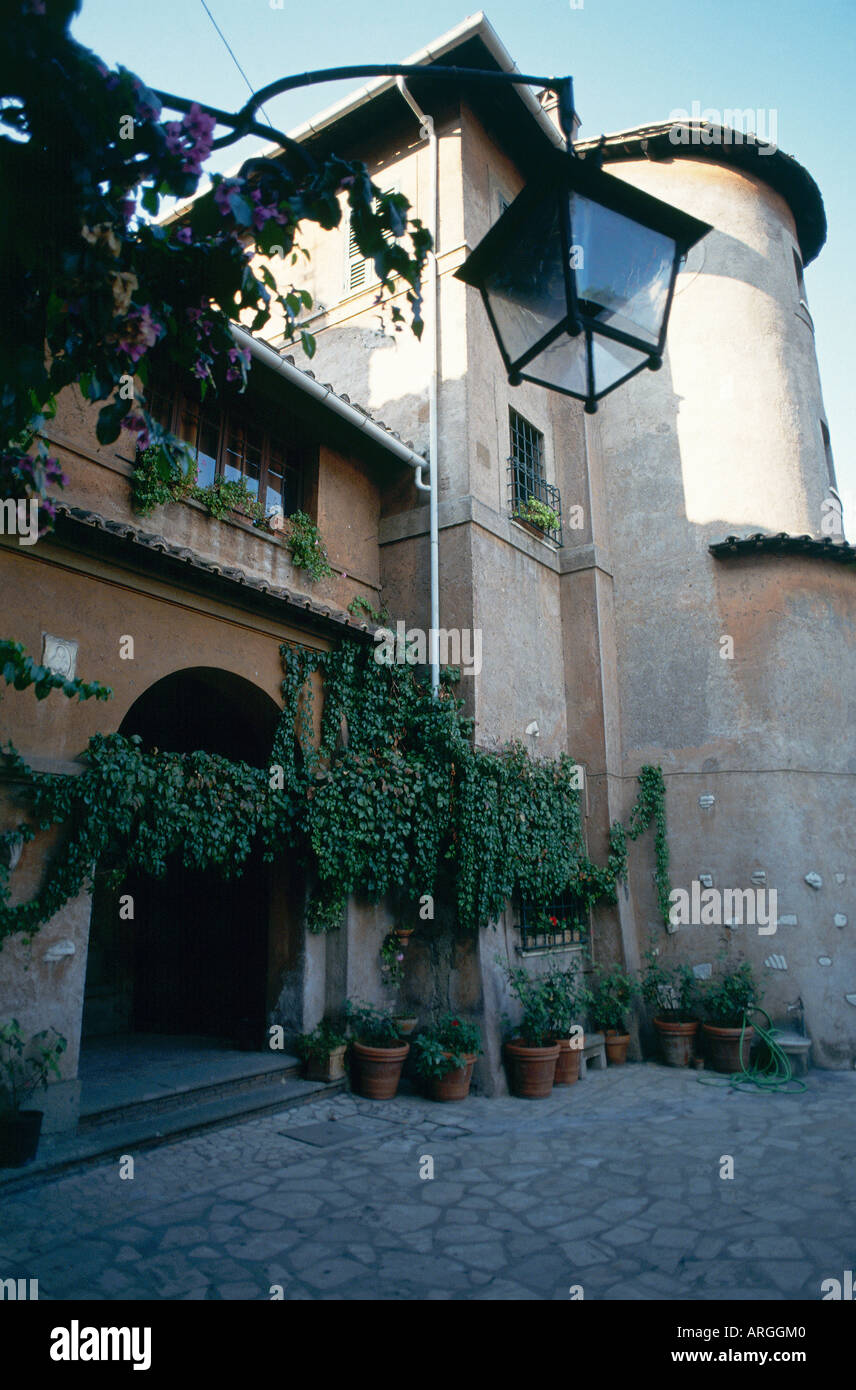 Plants in pots and ivy line the walls at the entrance to the Catacomb di Priscilla among Rome s oldest catacombs Stock Photohttps://www.alamy.com/image-license-details/?v=1https://www.alamy.com/plants-in-pots-and-ivy-line-the-walls-at-the-entrance-to-the-catacomb-image9171007.html
Plants in pots and ivy line the walls at the entrance to the Catacomb di Priscilla among Rome s oldest catacombs Stock Photohttps://www.alamy.com/image-license-details/?v=1https://www.alamy.com/plants-in-pots-and-ivy-line-the-walls-at-the-entrance-to-the-catacomb-image9171007.htmlRMARGGM0–Plants in pots and ivy line the walls at the entrance to the Catacomb di Priscilla among Rome s oldest catacombs
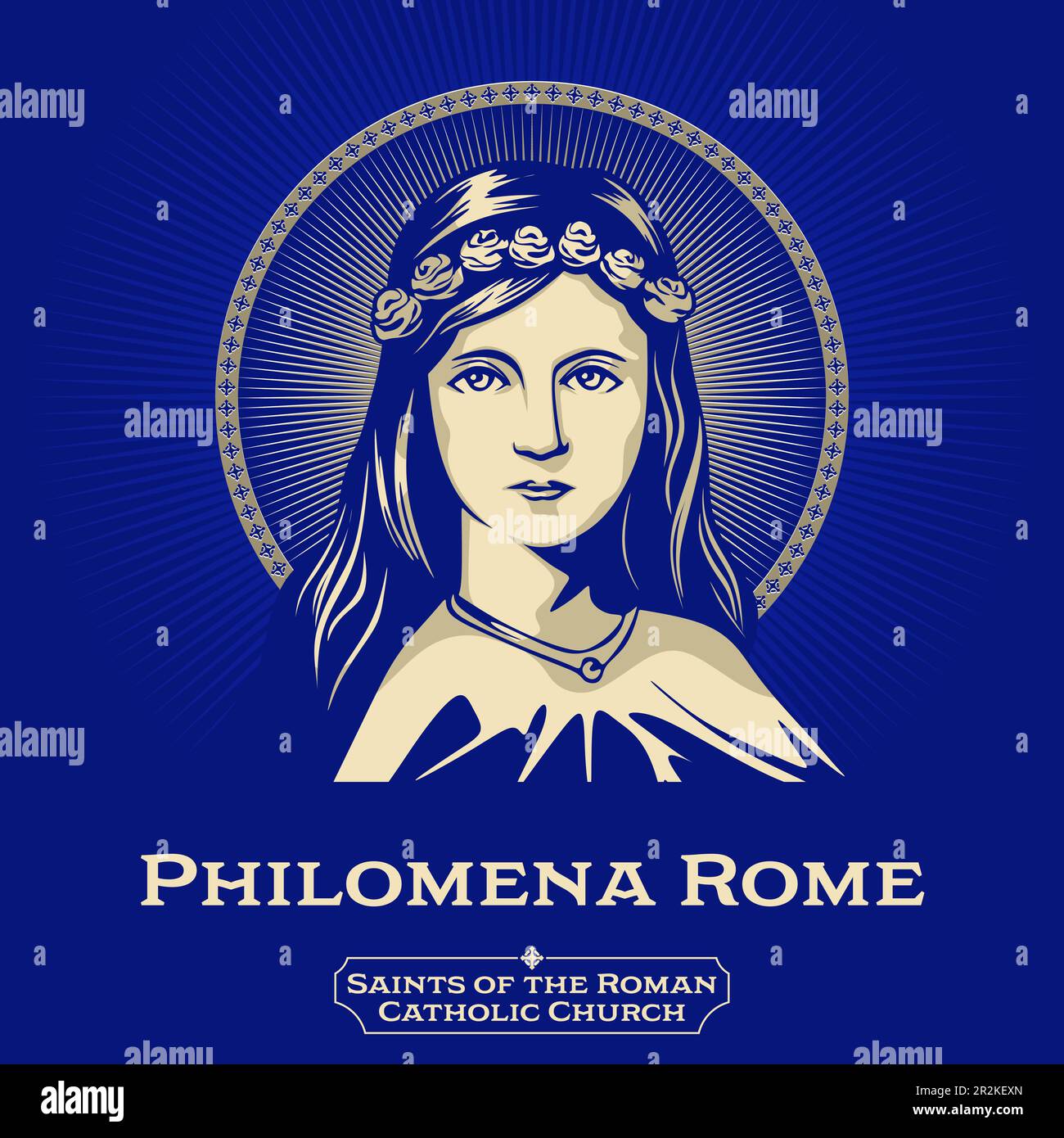 Catholic Saints. Philomena Rome (291-304) was a young virgin martyr whose remains were discovered on May 2425, 1802, in the Catacomb of Priscilla. Stock Vectorhttps://www.alamy.com/image-license-details/?v=1https://www.alamy.com/catholic-saints-philomena-rome-291-304-was-a-young-virgin-martyr-whose-remains-were-discovered-on-may-2425-1802-in-the-catacomb-of-priscilla-image552389901.html
Catholic Saints. Philomena Rome (291-304) was a young virgin martyr whose remains were discovered on May 2425, 1802, in the Catacomb of Priscilla. Stock Vectorhttps://www.alamy.com/image-license-details/?v=1https://www.alamy.com/catholic-saints-philomena-rome-291-304-was-a-young-virgin-martyr-whose-remains-were-discovered-on-may-2425-1802-in-the-catacomb-of-priscilla-image552389901.htmlRF2R2KEXN–Catholic Saints. Philomena Rome (291-304) was a young virgin martyr whose remains were discovered on May 2425, 1802, in the Catacomb of Priscilla.
 The Catholic encyclopedia (Volume 2); an international work of reference on the constitution, doctrine, discipline and history of the Catholic Church . oms were sometimes spacious; thatin the Roman catacomb of Priscilla adjoins otherlarger cubicula used perhaps for the adjuncts of thebaptismal rite; that of the Pontian cemetery bearstraces of sixth-century mural decoration, a beautifulcrux genimata with other Christian symbols being yetvisible. TVith the construction of edifices for Chris-tian worship a special building was erected for theceremonies of initiation. Ordinarily circular or polyg- Stock Photohttps://www.alamy.com/image-license-details/?v=1https://www.alamy.com/the-catholic-encyclopedia-volume-2-an-international-work-of-reference-on-the-constitution-doctrine-discipline-and-history-of-the-catholic-church-oms-were-sometimes-spacious-thatin-the-roman-catacomb-of-priscilla-adjoins-otherlarger-cubicula-used-perhaps-for-the-adjuncts-of-thebaptismal-rite-that-of-the-pontian-cemetery-bearstraces-of-sixth-century-mural-decoration-a-beautifulcrux-genimata-with-other-christian-symbols-being-yetvisible-tvith-the-construction-of-edifices-for-chris-tian-worship-a-special-building-was-erected-for-theceremonies-of-initiation-ordinarily-circular-or-polyg-image339474449.html
The Catholic encyclopedia (Volume 2); an international work of reference on the constitution, doctrine, discipline and history of the Catholic Church . oms were sometimes spacious; thatin the Roman catacomb of Priscilla adjoins otherlarger cubicula used perhaps for the adjuncts of thebaptismal rite; that of the Pontian cemetery bearstraces of sixth-century mural decoration, a beautifulcrux genimata with other Christian symbols being yetvisible. TVith the construction of edifices for Chris-tian worship a special building was erected for theceremonies of initiation. Ordinarily circular or polyg- Stock Photohttps://www.alamy.com/image-license-details/?v=1https://www.alamy.com/the-catholic-encyclopedia-volume-2-an-international-work-of-reference-on-the-constitution-doctrine-discipline-and-history-of-the-catholic-church-oms-were-sometimes-spacious-thatin-the-roman-catacomb-of-priscilla-adjoins-otherlarger-cubicula-used-perhaps-for-the-adjuncts-of-thebaptismal-rite-that-of-the-pontian-cemetery-bearstraces-of-sixth-century-mural-decoration-a-beautifulcrux-genimata-with-other-christian-symbols-being-yetvisible-tvith-the-construction-of-edifices-for-chris-tian-worship-a-special-building-was-erected-for-theceremonies-of-initiation-ordinarily-circular-or-polyg-image339474449.htmlRM2AM8B3D–The Catholic encyclopedia (Volume 2); an international work of reference on the constitution, doctrine, discipline and history of the Catholic Church . oms were sometimes spacious; thatin the Roman catacomb of Priscilla adjoins otherlarger cubicula used perhaps for the adjuncts of thebaptismal rite; that of the Pontian cemetery bearstraces of sixth-century mural decoration, a beautifulcrux genimata with other Christian symbols being yetvisible. TVith the construction of edifices for Chris-tian worship a special building was erected for theceremonies of initiation. Ordinarily circular or polyg-
 Rome (Italy) - The archeological ruins in the Appian Way of Roma (in italian: 'via Appia Antica'), the most important Roman road of the ancient empire Stock Photohttps://www.alamy.com/image-license-details/?v=1https://www.alamy.com/rome-italy-the-archeological-ruins-in-the-appian-way-of-roma-in-italian-via-appia-antica-the-most-important-roman-road-of-the-ancient-empire-image416316465.html
Rome (Italy) - The archeological ruins in the Appian Way of Roma (in italian: 'via Appia Antica'), the most important Roman road of the ancient empire Stock Photohttps://www.alamy.com/image-license-details/?v=1https://www.alamy.com/rome-italy-the-archeological-ruins-in-the-appian-way-of-roma-in-italian-via-appia-antica-the-most-important-roman-road-of-the-ancient-empire-image416316465.htmlRF2F58RW5–Rome (Italy) - The archeological ruins in the Appian Way of Roma (in italian: 'via Appia Antica'), the most important Roman road of the ancient empire
 250 Good Shepherd Catacomb of Priscilla Stock Photohttps://www.alamy.com/image-license-details/?v=1https://www.alamy.com/250-good-shepherd-catacomb-of-priscilla-image213896958.html
250 Good Shepherd Catacomb of Priscilla Stock Photohttps://www.alamy.com/image-license-details/?v=1https://www.alamy.com/250-good-shepherd-catacomb-of-priscilla-image213896958.htmlRMPBYRN2–250 Good Shepherd Catacomb of Priscilla
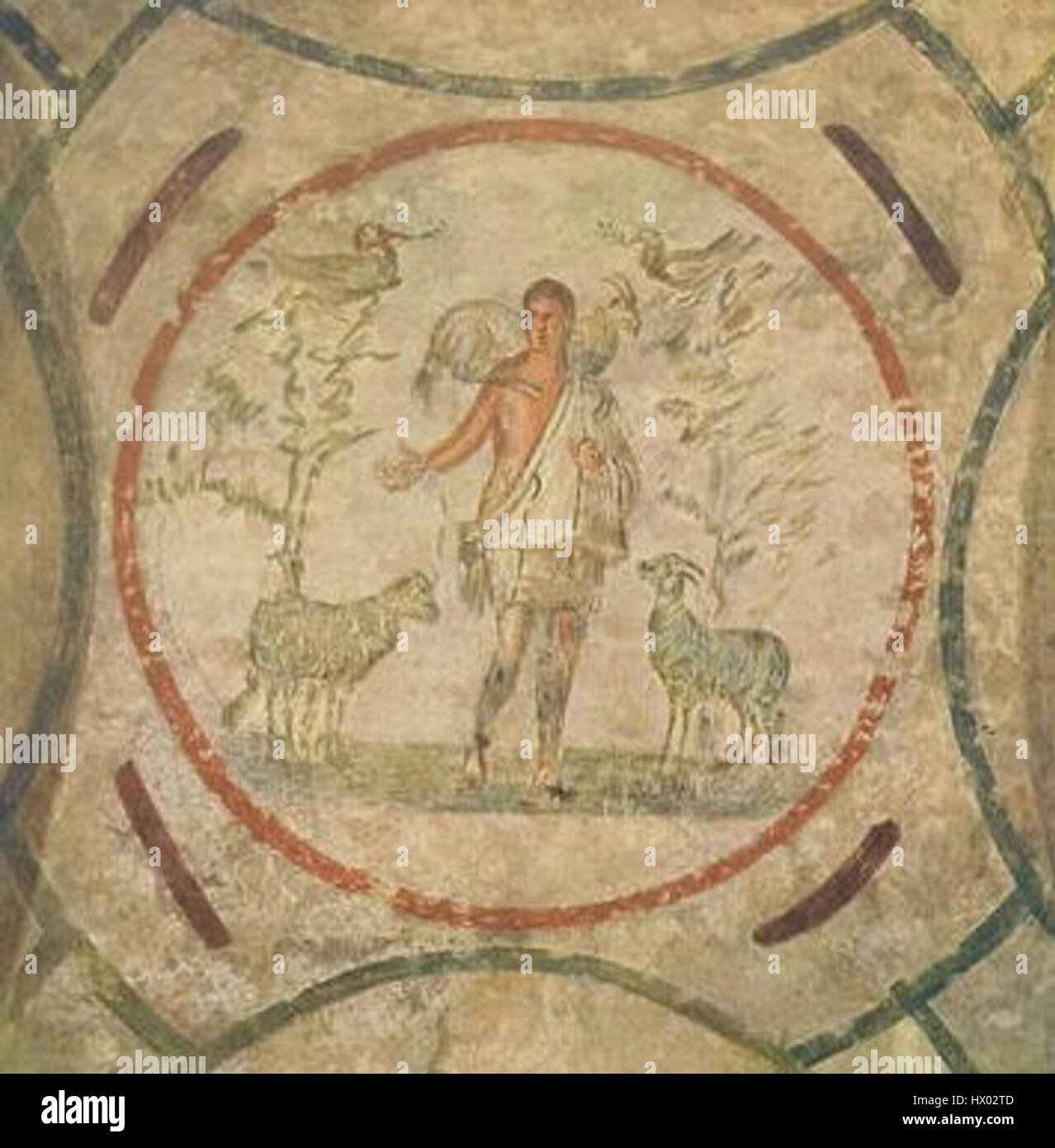 Good Shepherd Catacomb of Priscilla Stock Photohttps://www.alamy.com/image-license-details/?v=1https://www.alamy.com/stock-photo-good-shepherd-catacomb-of-priscilla-136455885.html
Good Shepherd Catacomb of Priscilla Stock Photohttps://www.alamy.com/image-license-details/?v=1https://www.alamy.com/stock-photo-good-shepherd-catacomb-of-priscilla-136455885.htmlRMHX02TD–Good Shepherd Catacomb of Priscilla
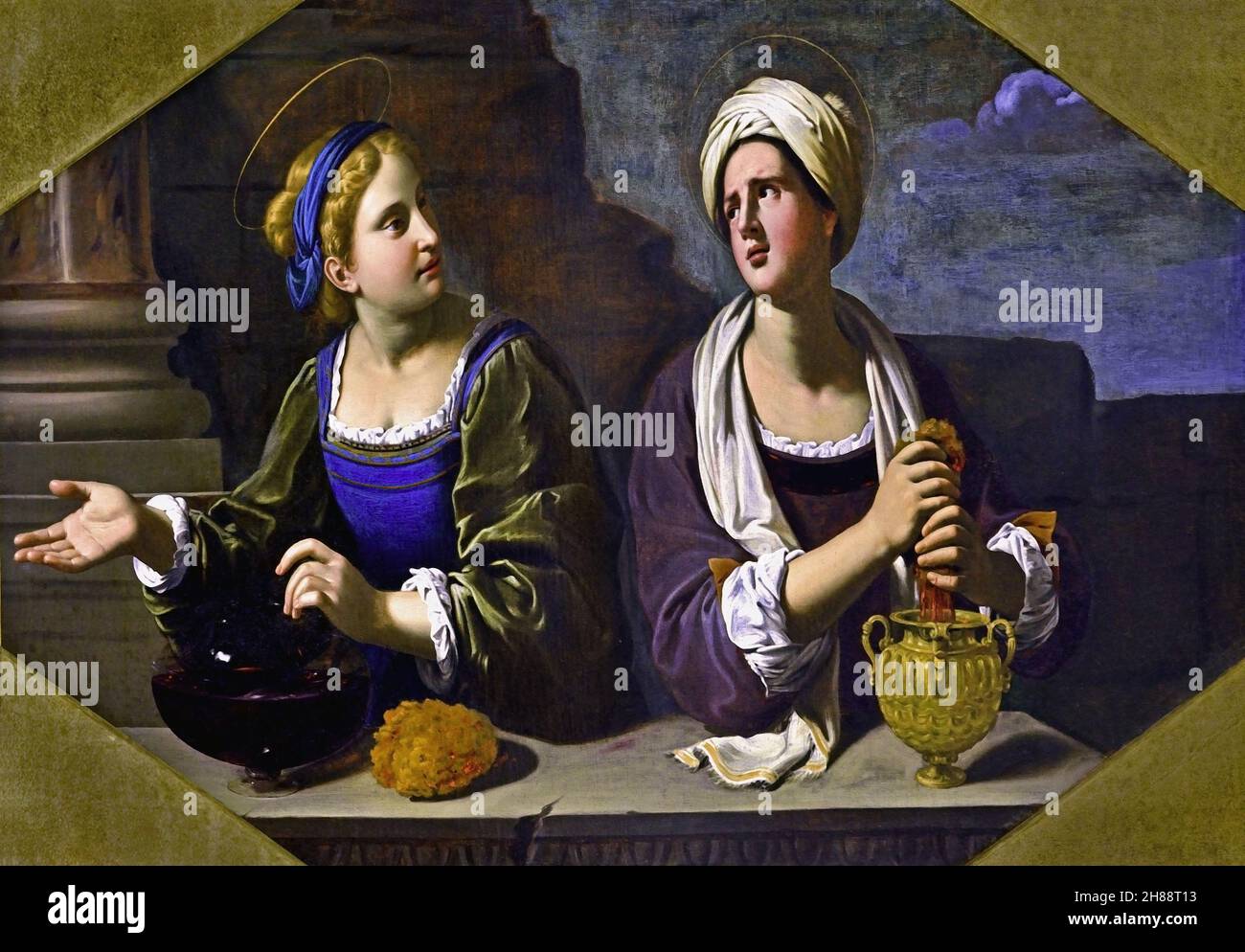 Praxedes was a Roman maiden, the sister of Pudentiana. by Antiveduto, GrammaticaItaly, 1571 – 1626 was a proto-Baroque Italian painter, active near Rome. ( When the Emperor Marcus Antoninus was hunting down Christians, they sought them out to relieve them with money, care, comfort and every charitable aid. The sisters were buried in the Catacomb of Priscilla. ) Stock Photohttps://www.alamy.com/image-license-details/?v=1https://www.alamy.com/praxedes-was-a-roman-maiden-the-sister-of-pudentiana-by-antiveduto-grammaticaitaly-1571-1626-was-a-proto-baroque-italian-painter-active-near-rome-when-the-emperor-marcus-antoninus-was-hunting-down-christians-they-sought-them-out-to-relieve-them-with-money-care-comfort-and-every-charitable-aid-the-sisters-were-buried-in-the-catacomb-of-priscilla-image452581279.html
Praxedes was a Roman maiden, the sister of Pudentiana. by Antiveduto, GrammaticaItaly, 1571 – 1626 was a proto-Baroque Italian painter, active near Rome. ( When the Emperor Marcus Antoninus was hunting down Christians, they sought them out to relieve them with money, care, comfort and every charitable aid. The sisters were buried in the Catacomb of Priscilla. ) Stock Photohttps://www.alamy.com/image-license-details/?v=1https://www.alamy.com/praxedes-was-a-roman-maiden-the-sister-of-pudentiana-by-antiveduto-grammaticaitaly-1571-1626-was-a-proto-baroque-italian-painter-active-near-rome-when-the-emperor-marcus-antoninus-was-hunting-down-christians-they-sought-them-out-to-relieve-them-with-money-care-comfort-and-every-charitable-aid-the-sisters-were-buried-in-the-catacomb-of-priscilla-image452581279.htmlRM2H88T13–Praxedes was a Roman maiden, the sister of Pudentiana. by Antiveduto, GrammaticaItaly, 1571 – 1626 was a proto-Baroque Italian painter, active near Rome. ( When the Emperor Marcus Antoninus was hunting down Christians, they sought them out to relieve them with money, care, comfort and every charitable aid. The sisters were buried in the Catacomb of Priscilla. )
 For the celebration of the feast of all the dead Pope Francis Celebrates Mass in the Catacombs of Priscilla in Rome, Italy on November 2, 2019. It was the first time in his life that pope Francis visits a catacomb. The catacombs were used for early Christians burials from the late 2nd-4th Century. The labyrinthine cemetery complex stretching for 13 kilometers over several levels underneath northern Rome is known as the 'Queen of the catacombs' because it features burial chambers of popes and a tiny, delicate fresco of the Madonna nursing Jesus dating from around 230-240 A.D. Photo by ABACAPRES Stock Photohttps://www.alamy.com/image-license-details/?v=1https://www.alamy.com/for-the-celebration-of-the-feast-of-all-the-dead-pope-francis-celebrates-mass-in-the-catacombs-of-priscilla-in-rome-italy-on-november-2-2019-it-was-the-first-time-in-his-life-that-pope-francis-visits-a-catacomb-the-catacombs-were-used-for-early-christians-burials-from-the-late-2nd-4thcentury-the-labyrinthine-cemetery-complex-stretching-for-13-kilometers-over-several-levels-underneath-northern-rome-is-known-as-the-queen-of-the-catacombs-because-it-features-burial-chambers-of-popes-and-a-tiny-delicate-fresco-of-the-madonna-nursing-jesus-dating-from-around-230-240-ad-photo-by-abacapres-image387750345.html
For the celebration of the feast of all the dead Pope Francis Celebrates Mass in the Catacombs of Priscilla in Rome, Italy on November 2, 2019. It was the first time in his life that pope Francis visits a catacomb. The catacombs were used for early Christians burials from the late 2nd-4th Century. The labyrinthine cemetery complex stretching for 13 kilometers over several levels underneath northern Rome is known as the 'Queen of the catacombs' because it features burial chambers of popes and a tiny, delicate fresco of the Madonna nursing Jesus dating from around 230-240 A.D. Photo by ABACAPRES Stock Photohttps://www.alamy.com/image-license-details/?v=1https://www.alamy.com/for-the-celebration-of-the-feast-of-all-the-dead-pope-francis-celebrates-mass-in-the-catacombs-of-priscilla-in-rome-italy-on-november-2-2019-it-was-the-first-time-in-his-life-that-pope-francis-visits-a-catacomb-the-catacombs-were-used-for-early-christians-burials-from-the-late-2nd-4thcentury-the-labyrinthine-cemetery-complex-stretching-for-13-kilometers-over-several-levels-underneath-northern-rome-is-known-as-the-queen-of-the-catacombs-because-it-features-burial-chambers-of-popes-and-a-tiny-delicate-fresco-of-the-madonna-nursing-jesus-dating-from-around-230-240-ad-photo-by-abacapres-image387750345.htmlRM2DERFEH–For the celebration of the feast of all the dead Pope Francis Celebrates Mass in the Catacombs of Priscilla in Rome, Italy on November 2, 2019. It was the first time in his life that pope Francis visits a catacomb. The catacombs were used for early Christians burials from the late 2nd-4th Century. The labyrinthine cemetery complex stretching for 13 kilometers over several levels underneath northern Rome is known as the 'Queen of the catacombs' because it features burial chambers of popes and a tiny, delicate fresco of the Madonna nursing Jesus dating from around 230-240 A.D. Photo by ABACAPRES
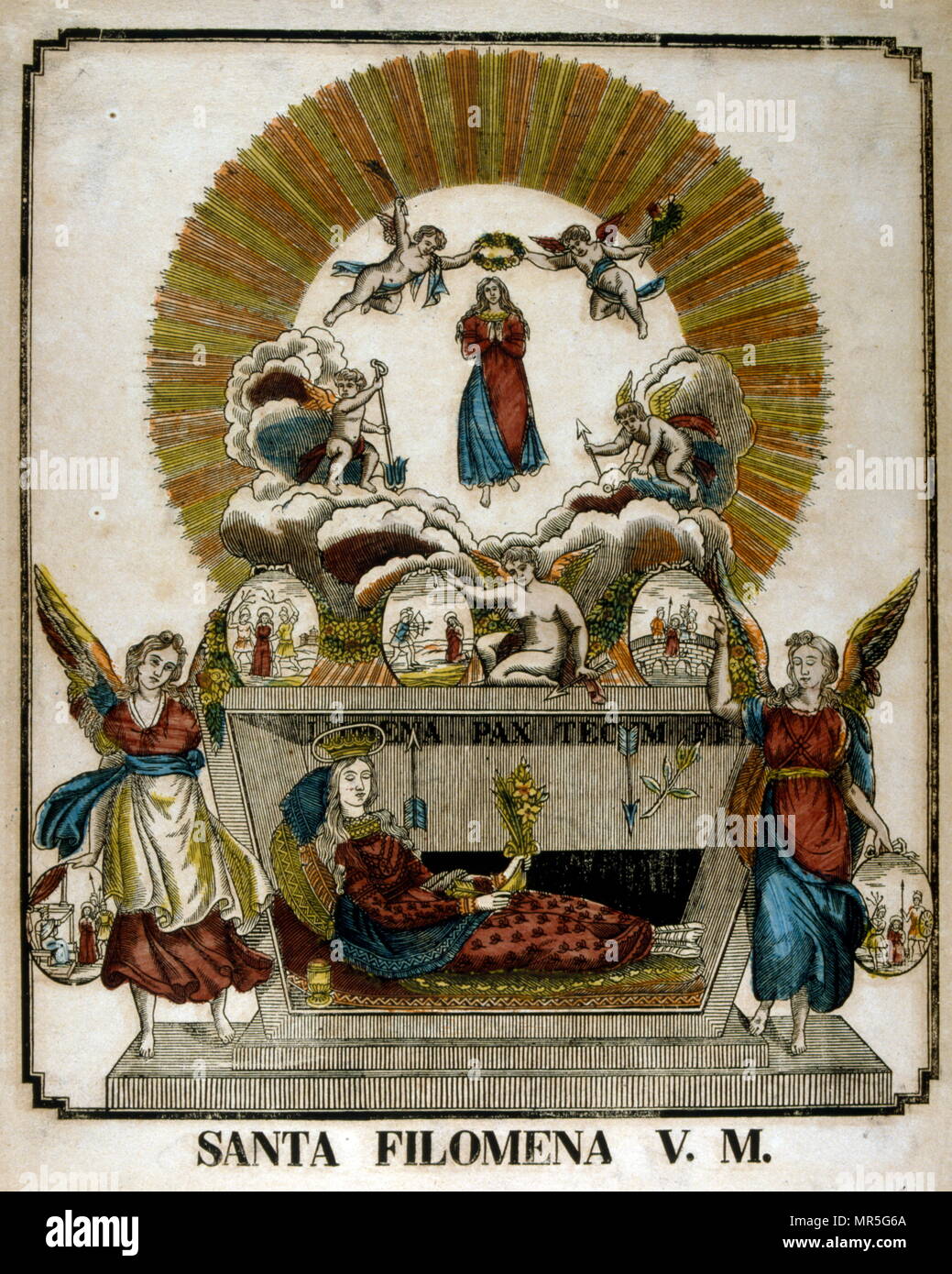 French 19th century illustration of Saint Philomena a young consecrated virgin whose remains were discovered on May 24/25 1802 in the Catacomb of Priscilla. Stock Photohttps://www.alamy.com/image-license-details/?v=1https://www.alamy.com/french-19th-century-illustration-of-saint-philomena-a-young-consecrated-virgin-whose-remains-were-discovered-on-may-2425-1802-in-the-catacomb-of-priscilla-image186363250.html
French 19th century illustration of Saint Philomena a young consecrated virgin whose remains were discovered on May 24/25 1802 in the Catacomb of Priscilla. Stock Photohttps://www.alamy.com/image-license-details/?v=1https://www.alamy.com/french-19th-century-illustration-of-saint-philomena-a-young-consecrated-virgin-whose-remains-were-discovered-on-may-2425-1802-in-the-catacomb-of-priscilla-image186363250.htmlRMMR5G6A–French 19th century illustration of Saint Philomena a young consecrated virgin whose remains were discovered on May 24/25 1802 in the Catacomb of Priscilla.
 The Saints Praxedes, Pudentiana and Paul the Apostle, mural painting at the Catacomb of Priscilla, Rome. Italy, Europe. Old 19th century engraved illustration from Trip to Rome by Francis Wey, Le Tour du Monde 1870 Stock Photohttps://www.alamy.com/image-license-details/?v=1https://www.alamy.com/the-saints-praxedes-pudentiana-and-paul-the-apostle-mural-painting-at-the-catacomb-of-priscilla-rome-italy-europe-old-19th-century-engraved-illustration-from-trip-to-rome-by-francis-wey-le-tour-du-monde-1870-image459152253.html
The Saints Praxedes, Pudentiana and Paul the Apostle, mural painting at the Catacomb of Priscilla, Rome. Italy, Europe. Old 19th century engraved illustration from Trip to Rome by Francis Wey, Le Tour du Monde 1870 Stock Photohttps://www.alamy.com/image-license-details/?v=1https://www.alamy.com/the-saints-praxedes-pudentiana-and-paul-the-apostle-mural-painting-at-the-catacomb-of-priscilla-rome-italy-europe-old-19th-century-engraved-illustration-from-trip-to-rome-by-francis-wey-le-tour-du-monde-1870-image459152253.htmlRM2HK05AN–The Saints Praxedes, Pudentiana and Paul the Apostle, mural painting at the Catacomb of Priscilla, Rome. Italy, Europe. Old 19th century engraved illustration from Trip to Rome by Francis Wey, Le Tour du Monde 1870
 Monuments of the early church . FiG. S4. — Virgin and Child, with a prophet, who pointsto a star, fresco in the catacomb of Priscilla. Middleof the second century. 246 PICTORIAL ABT gests one of Raphaels ^ladoiiiias, and prompts the curiousreflection that in the long interval between that unknownl)ainter Tind the Italian artists of the early Renascence there. SCULPTURE—Introductory 247 was, perhaps, no one who could draw such a group. It will benoticed that the man, who is clad in the philosophers pallium,is pointing to a star. It is not perfectly clear what the picturerepresents, but the man Stock Photohttps://www.alamy.com/image-license-details/?v=1https://www.alamy.com/monuments-of-the-early-church-fig-s4-virgin-and-child-with-a-prophet-who-pointsto-a-star-fresco-in-the-catacomb-of-priscilla-middleof-the-second-century-246-pictorial-abt-gests-one-of-raphaels-ladoiiiias-and-prompts-the-curiousreflection-that-in-the-long-interval-between-that-unknownlainter-tind-the-italian-artists-of-the-early-renascence-there-sculptureintroductory-247-was-perhaps-no-one-who-could-draw-such-a-group-it-will-benoticed-that-the-man-who-is-clad-in-the-philosophers-palliumis-pointing-to-a-star-it-is-not-perfectly-clear-what-the-picturerepresents-but-the-man-image338264992.html
Monuments of the early church . FiG. S4. — Virgin and Child, with a prophet, who pointsto a star, fresco in the catacomb of Priscilla. Middleof the second century. 246 PICTORIAL ABT gests one of Raphaels ^ladoiiiias, and prompts the curiousreflection that in the long interval between that unknownl)ainter Tind the Italian artists of the early Renascence there. SCULPTURE—Introductory 247 was, perhaps, no one who could draw such a group. It will benoticed that the man, who is clad in the philosophers pallium,is pointing to a star. It is not perfectly clear what the picturerepresents, but the man Stock Photohttps://www.alamy.com/image-license-details/?v=1https://www.alamy.com/monuments-of-the-early-church-fig-s4-virgin-and-child-with-a-prophet-who-pointsto-a-star-fresco-in-the-catacomb-of-priscilla-middleof-the-second-century-246-pictorial-abt-gests-one-of-raphaels-ladoiiiias-and-prompts-the-curiousreflection-that-in-the-long-interval-between-that-unknownlainter-tind-the-italian-artists-of-the-early-renascence-there-sculptureintroductory-247-was-perhaps-no-one-who-could-draw-such-a-group-it-will-benoticed-that-the-man-who-is-clad-in-the-philosophers-palliumis-pointing-to-a-star-it-is-not-perfectly-clear-what-the-picturerepresents-but-the-man-image338264992.htmlRM2AJ98CG–Monuments of the early church . FiG. S4. — Virgin and Child, with a prophet, who pointsto a star, fresco in the catacomb of Priscilla. Middleof the second century. 246 PICTORIAL ABT gests one of Raphaels ^ladoiiiias, and prompts the curiousreflection that in the long interval between that unknownl)ainter Tind the Italian artists of the early Renascence there. SCULPTURE—Introductory 247 was, perhaps, no one who could draw such a group. It will benoticed that the man, who is clad in the philosophers pallium,is pointing to a star. It is not perfectly clear what the picturerepresents, but the man
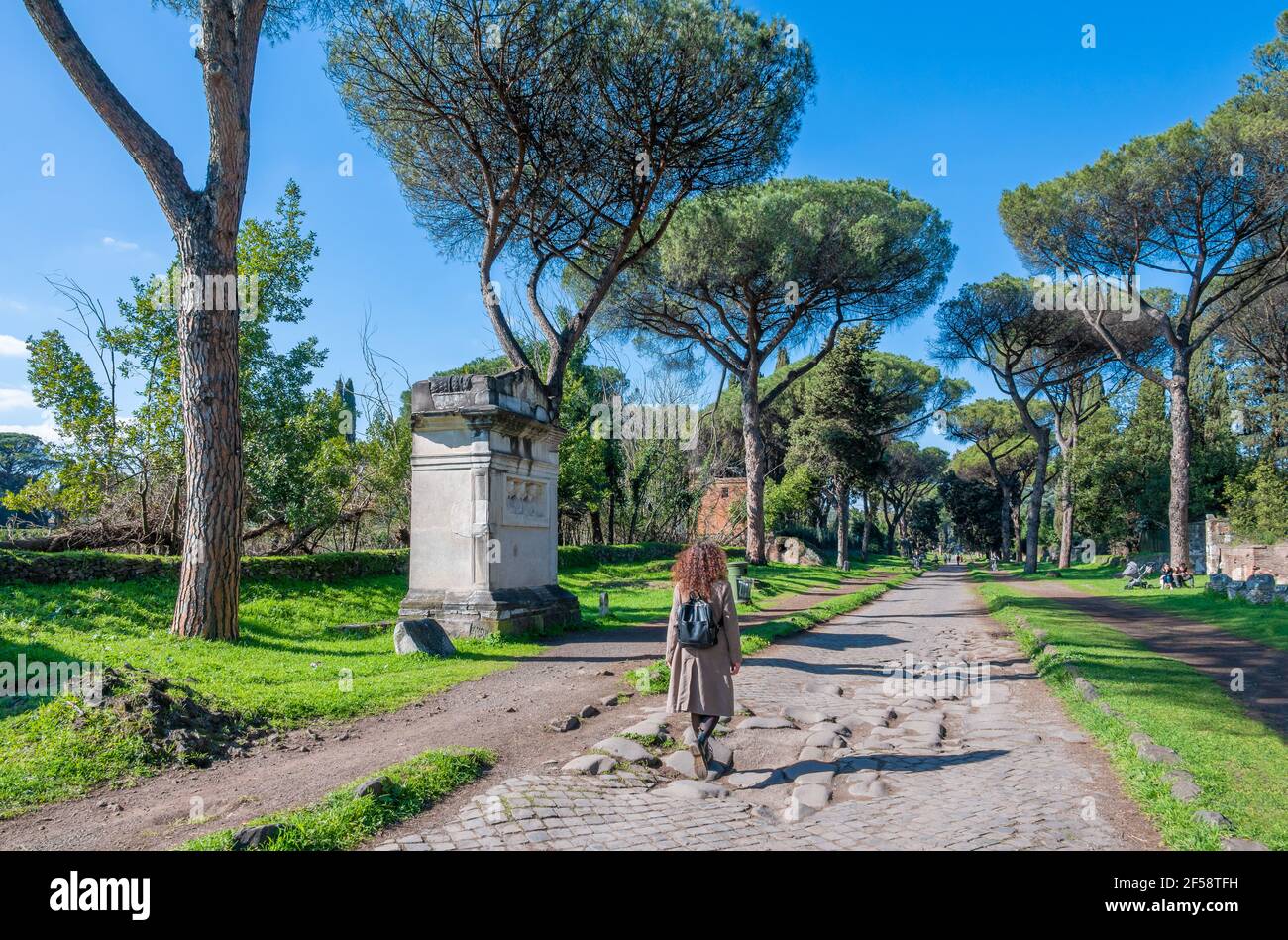 Rome (Italy) - The archeological ruins in the Appian Way of Roma (in italian: 'via Appia Antica'), the most important Roman road of the ancient empire Stock Photohttps://www.alamy.com/image-license-details/?v=1https://www.alamy.com/rome-italy-the-archeological-ruins-in-the-appian-way-of-roma-in-italian-via-appia-antica-the-most-important-roman-road-of-the-ancient-empire-image416316981.html
Rome (Italy) - The archeological ruins in the Appian Way of Roma (in italian: 'via Appia Antica'), the most important Roman road of the ancient empire Stock Photohttps://www.alamy.com/image-license-details/?v=1https://www.alamy.com/rome-italy-the-archeological-ruins-in-the-appian-way-of-roma-in-italian-via-appia-antica-the-most-important-roman-road-of-the-ancient-empire-image416316981.htmlRF2F58TFH–Rome (Italy) - The archeological ruins in the Appian Way of Roma (in italian: 'via Appia Antica'), the most important Roman road of the ancient empire
 . Good Shepherd in catacomb of Priscilla (Second half of the 3rd century) . 1903. Wilpert, Joseph (1857—1944) 216 Good Shepherd Catacomb of Priscilla Stock Photohttps://www.alamy.com/image-license-details/?v=1https://www.alamy.com/good-shepherd-in-catacomb-of-priscilla-second-half-of-the-3rd-century-1903-wilpert-joseph-18571944-216-good-shepherd-catacomb-of-priscilla-image189026276.html
. Good Shepherd in catacomb of Priscilla (Second half of the 3rd century) . 1903. Wilpert, Joseph (1857—1944) 216 Good Shepherd Catacomb of Priscilla Stock Photohttps://www.alamy.com/image-license-details/?v=1https://www.alamy.com/good-shepherd-in-catacomb-of-priscilla-second-half-of-the-3rd-century-1903-wilpert-joseph-18571944-216-good-shepherd-catacomb-of-priscilla-image189026276.htmlRMMYETXC–. Good Shepherd in catacomb of Priscilla (Second half of the 3rd century) . 1903. Wilpert, Joseph (1857—1944) 216 Good Shepherd Catacomb of Priscilla
 For the celebration of the feast of all the dead Pope Francis Celebrates Mass in the Catacombs of Priscilla in Rome, Italy on November 2, 2019. It was the first time in his life that pope Francis visits a catacomb. The catacombs were used for early Christians burials from the late 2nd-4th Century. The labyrinthine cemetery complex stretching for 13 kilometers over several levels underneath northern Rome is known as the 'Queen of the catacombs' because it features burial chambers of popes and a tiny, delicate fresco of the Madonna nursing Jesus dating from around 230-240 A.D. Photo by ABACAPRES Stock Photohttps://www.alamy.com/image-license-details/?v=1https://www.alamy.com/for-the-celebration-of-the-feast-of-all-the-dead-pope-francis-celebrates-mass-in-the-catacombs-of-priscilla-in-rome-italy-on-november-2-2019-it-was-the-first-time-in-his-life-that-pope-francis-visits-a-catacomb-the-catacombs-were-used-for-early-christians-burials-from-the-late-2nd-4thcentury-the-labyrinthine-cemetery-complex-stretching-for-13-kilometers-over-several-levels-underneath-northern-rome-is-known-as-the-queen-of-the-catacombs-because-it-features-burial-chambers-of-popes-and-a-tiny-delicate-fresco-of-the-madonna-nursing-jesus-dating-from-around-230-240-ad-photo-by-abacapres-image387750329.html
For the celebration of the feast of all the dead Pope Francis Celebrates Mass in the Catacombs of Priscilla in Rome, Italy on November 2, 2019. It was the first time in his life that pope Francis visits a catacomb. The catacombs were used for early Christians burials from the late 2nd-4th Century. The labyrinthine cemetery complex stretching for 13 kilometers over several levels underneath northern Rome is known as the 'Queen of the catacombs' because it features burial chambers of popes and a tiny, delicate fresco of the Madonna nursing Jesus dating from around 230-240 A.D. Photo by ABACAPRES Stock Photohttps://www.alamy.com/image-license-details/?v=1https://www.alamy.com/for-the-celebration-of-the-feast-of-all-the-dead-pope-francis-celebrates-mass-in-the-catacombs-of-priscilla-in-rome-italy-on-november-2-2019-it-was-the-first-time-in-his-life-that-pope-francis-visits-a-catacomb-the-catacombs-were-used-for-early-christians-burials-from-the-late-2nd-4thcentury-the-labyrinthine-cemetery-complex-stretching-for-13-kilometers-over-several-levels-underneath-northern-rome-is-known-as-the-queen-of-the-catacombs-because-it-features-burial-chambers-of-popes-and-a-tiny-delicate-fresco-of-the-madonna-nursing-jesus-dating-from-around-230-240-ad-photo-by-abacapres-image387750329.htmlRM2DERFE1–For the celebration of the feast of all the dead Pope Francis Celebrates Mass in the Catacombs of Priscilla in Rome, Italy on November 2, 2019. It was the first time in his life that pope Francis visits a catacomb. The catacombs were used for early Christians burials from the late 2nd-4th Century. The labyrinthine cemetery complex stretching for 13 kilometers over several levels underneath northern Rome is known as the 'Queen of the catacombs' because it features burial chambers of popes and a tiny, delicate fresco of the Madonna nursing Jesus dating from around 230-240 A.D. Photo by ABACAPRES
 French 19th century illustration of Saint Philomena a young consecrated virgin whose remains were discovered on May 24/25 1802 in the Catacomb of Priscilla. Stock Photohttps://www.alamy.com/image-license-details/?v=1https://www.alamy.com/french-19th-century-illustration-of-saint-philomena-a-young-consecrated-virgin-whose-remains-were-discovered-on-may-2425-1802-in-the-catacomb-of-priscilla-image186363214.html
French 19th century illustration of Saint Philomena a young consecrated virgin whose remains were discovered on May 24/25 1802 in the Catacomb of Priscilla. Stock Photohttps://www.alamy.com/image-license-details/?v=1https://www.alamy.com/french-19th-century-illustration-of-saint-philomena-a-young-consecrated-virgin-whose-remains-were-discovered-on-may-2425-1802-in-the-catacomb-of-priscilla-image186363214.htmlRMMR5G52–French 19th century illustration of Saint Philomena a young consecrated virgin whose remains were discovered on May 24/25 1802 in the Catacomb of Priscilla.
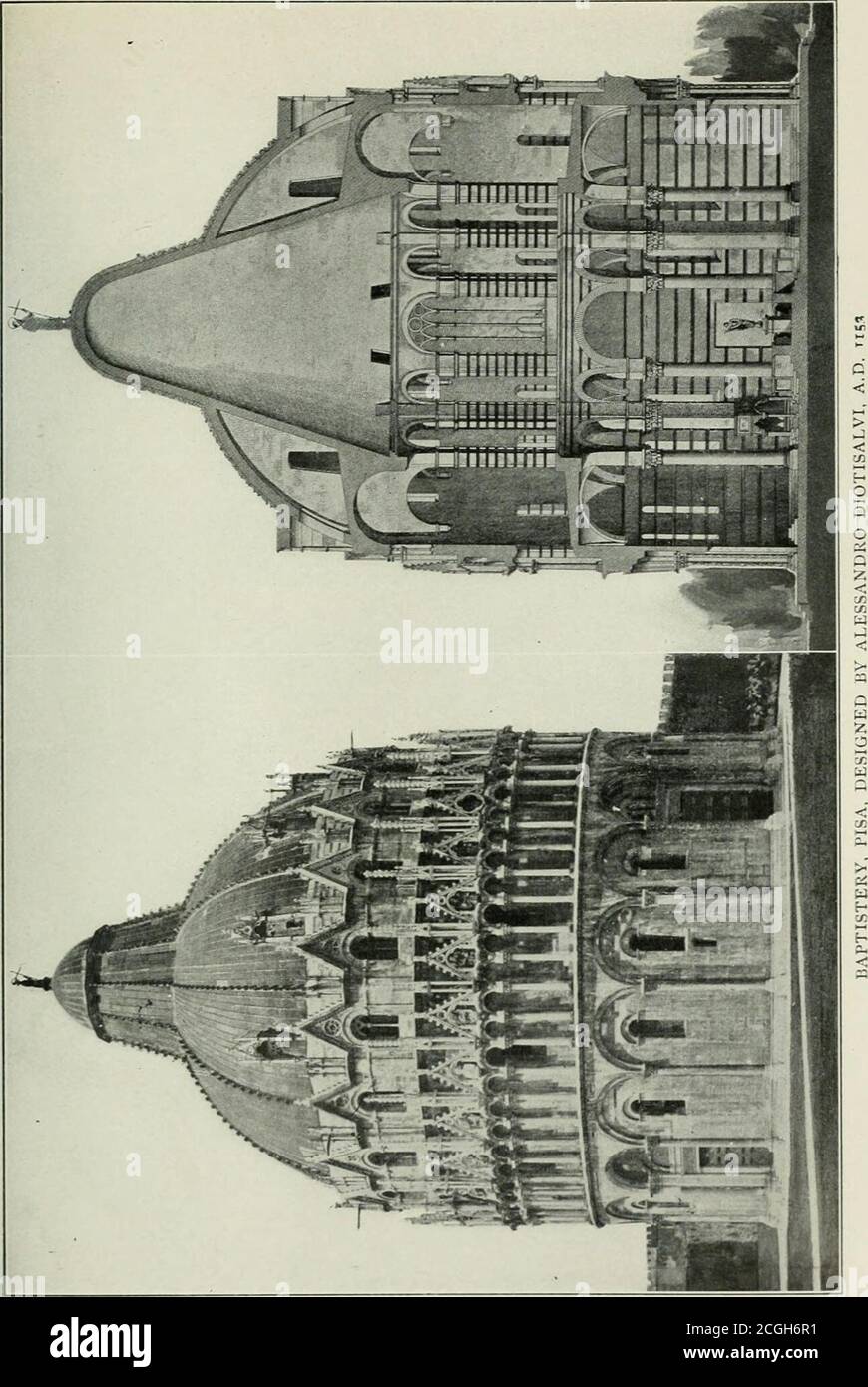 . The Catholic encyclopedia; an international work of reference on the constitution, doctrine, discipline, and history of the Catholic Church . ms were sometimes spacious; thatin the Roman catacomb of Priscilla adjoins otherlarger cubicula used perhaps for the adjimcts of thebaptismal rite; that of the Pontian cemeterj bearstraces of sixth-centurj- mural decoration, a beautifulfrw.T gemmata with other Christian symbols being yetvisible. With the construction of edifices for Chris-tian worship a special building was erected for theceremonies of initiation. Ordinarily circular or polyg-onal, it Stock Photohttps://www.alamy.com/image-license-details/?v=1https://www.alamy.com/the-catholic-encyclopedia-an-international-work-of-reference-on-the-constitution-doctrine-discipline-and-history-of-the-catholic-church-ms-were-sometimes-spacious-thatin-the-roman-catacomb-of-priscilla-adjoins-otherlarger-cubicula-used-perhaps-for-the-adjimcts-of-thebaptismal-rite-that-of-the-pontian-cemeterj-bearstraces-of-sixth-centurj-mural-decoration-a-beautifulfrwt-gemmata-with-other-christian-symbols-being-yetvisible-with-the-construction-of-edifices-for-chris-tian-worship-a-special-building-was-erected-for-theceremonies-of-initiation-ordinarily-circular-or-polyg-onal-it-image371630757.html
. The Catholic encyclopedia; an international work of reference on the constitution, doctrine, discipline, and history of the Catholic Church . ms were sometimes spacious; thatin the Roman catacomb of Priscilla adjoins otherlarger cubicula used perhaps for the adjimcts of thebaptismal rite; that of the Pontian cemeterj bearstraces of sixth-centurj- mural decoration, a beautifulfrw.T gemmata with other Christian symbols being yetvisible. With the construction of edifices for Chris-tian worship a special building was erected for theceremonies of initiation. Ordinarily circular or polyg-onal, it Stock Photohttps://www.alamy.com/image-license-details/?v=1https://www.alamy.com/the-catholic-encyclopedia-an-international-work-of-reference-on-the-constitution-doctrine-discipline-and-history-of-the-catholic-church-ms-were-sometimes-spacious-thatin-the-roman-catacomb-of-priscilla-adjoins-otherlarger-cubicula-used-perhaps-for-the-adjimcts-of-thebaptismal-rite-that-of-the-pontian-cemeterj-bearstraces-of-sixth-centurj-mural-decoration-a-beautifulfrwt-gemmata-with-other-christian-symbols-being-yetvisible-with-the-construction-of-edifices-for-chris-tian-worship-a-special-building-was-erected-for-theceremonies-of-initiation-ordinarily-circular-or-polyg-onal-it-image371630757.htmlRM2CGH6R1–. The Catholic encyclopedia; an international work of reference on the constitution, doctrine, discipline, and history of the Catholic Church . ms were sometimes spacious; thatin the Roman catacomb of Priscilla adjoins otherlarger cubicula used perhaps for the adjimcts of thebaptismal rite; that of the Pontian cemeterj bearstraces of sixth-centurj- mural decoration, a beautifulfrw.T gemmata with other Christian symbols being yetvisible. With the construction of edifices for Chris-tian worship a special building was erected for theceremonies of initiation. Ordinarily circular or polyg-onal, it
 Rome (Italy) - The archeological ruins in the Appian Way of Roma (in italian: 'via Appia Antica'), the most important Roman road of the ancient empire Stock Photohttps://www.alamy.com/image-license-details/?v=1https://www.alamy.com/rome-italy-the-archeological-ruins-in-the-appian-way-of-roma-in-italian-via-appia-antica-the-most-important-roman-road-of-the-ancient-empire-image416316733.html
Rome (Italy) - The archeological ruins in the Appian Way of Roma (in italian: 'via Appia Antica'), the most important Roman road of the ancient empire Stock Photohttps://www.alamy.com/image-license-details/?v=1https://www.alamy.com/rome-italy-the-archeological-ruins-in-the-appian-way-of-roma-in-italian-via-appia-antica-the-most-important-roman-road-of-the-ancient-empire-image416316733.htmlRF2F58T6N–Rome (Italy) - The archeological ruins in the Appian Way of Roma (in italian: 'via Appia Antica'), the most important Roman road of the ancient empire
 . Good Shepherd in catacomb of Priscilla (Second half of the 3rd century) . 1903. Wilpert, Joseph (1857—1944) 249 Good Shepherd Catacomb of Priscilla Stock Photohttps://www.alamy.com/image-license-details/?v=1https://www.alamy.com/good-shepherd-in-catacomb-of-priscilla-second-half-of-the-3rd-century-1903-wilpert-joseph-18571944-249-good-shepherd-catacomb-of-priscilla-image187726714.html
. Good Shepherd in catacomb of Priscilla (Second half of the 3rd century) . 1903. Wilpert, Joseph (1857—1944) 249 Good Shepherd Catacomb of Priscilla Stock Photohttps://www.alamy.com/image-license-details/?v=1https://www.alamy.com/good-shepherd-in-catacomb-of-priscilla-second-half-of-the-3rd-century-1903-wilpert-joseph-18571944-249-good-shepherd-catacomb-of-priscilla-image187726714.htmlRMMWBK9E–. Good Shepherd in catacomb of Priscilla (Second half of the 3rd century) . 1903. Wilpert, Joseph (1857—1944) 249 Good Shepherd Catacomb of Priscilla
 For the celebration of the feast of all the dead Pope Francis Celebrates Mass in the Catacombs of Priscilla in Rome, Italy on November 2, 2019. It was the first time in his life that pope Francis visits a catacomb. The catacombs were used for early Christians burials from the late 2nd-4th Century. The labyrinthine cemetery complex stretching for 13 kilometers over several levels underneath northern Rome is known as the 'Queen of the catacombs' because it features burial chambers of popes and a tiny, delicate fresco of the Madonna nursing Jesus dating from around 230-240 A.D. Photo by ABACAPRES Stock Photohttps://www.alamy.com/image-license-details/?v=1https://www.alamy.com/for-the-celebration-of-the-feast-of-all-the-dead-pope-francis-celebrates-mass-in-the-catacombs-of-priscilla-in-rome-italy-on-november-2-2019-it-was-the-first-time-in-his-life-that-pope-francis-visits-a-catacomb-the-catacombs-were-used-for-early-christians-burials-from-the-late-2nd-4thcentury-the-labyrinthine-cemetery-complex-stretching-for-13-kilometers-over-several-levels-underneath-northern-rome-is-known-as-the-queen-of-the-catacombs-because-it-features-burial-chambers-of-popes-and-a-tiny-delicate-fresco-of-the-madonna-nursing-jesus-dating-from-around-230-240-ad-photo-by-abacapres-image387750381.html
For the celebration of the feast of all the dead Pope Francis Celebrates Mass in the Catacombs of Priscilla in Rome, Italy on November 2, 2019. It was the first time in his life that pope Francis visits a catacomb. The catacombs were used for early Christians burials from the late 2nd-4th Century. The labyrinthine cemetery complex stretching for 13 kilometers over several levels underneath northern Rome is known as the 'Queen of the catacombs' because it features burial chambers of popes and a tiny, delicate fresco of the Madonna nursing Jesus dating from around 230-240 A.D. Photo by ABACAPRES Stock Photohttps://www.alamy.com/image-license-details/?v=1https://www.alamy.com/for-the-celebration-of-the-feast-of-all-the-dead-pope-francis-celebrates-mass-in-the-catacombs-of-priscilla-in-rome-italy-on-november-2-2019-it-was-the-first-time-in-his-life-that-pope-francis-visits-a-catacomb-the-catacombs-were-used-for-early-christians-burials-from-the-late-2nd-4thcentury-the-labyrinthine-cemetery-complex-stretching-for-13-kilometers-over-several-levels-underneath-northern-rome-is-known-as-the-queen-of-the-catacombs-because-it-features-burial-chambers-of-popes-and-a-tiny-delicate-fresco-of-the-madonna-nursing-jesus-dating-from-around-230-240-ad-photo-by-abacapres-image387750381.htmlRM2DERFFW–For the celebration of the feast of all the dead Pope Francis Celebrates Mass in the Catacombs of Priscilla in Rome, Italy on November 2, 2019. It was the first time in his life that pope Francis visits a catacomb. The catacombs were used for early Christians burials from the late 2nd-4th Century. The labyrinthine cemetery complex stretching for 13 kilometers over several levels underneath northern Rome is known as the 'Queen of the catacombs' because it features burial chambers of popes and a tiny, delicate fresco of the Madonna nursing Jesus dating from around 230-240 A.D. Photo by ABACAPRES
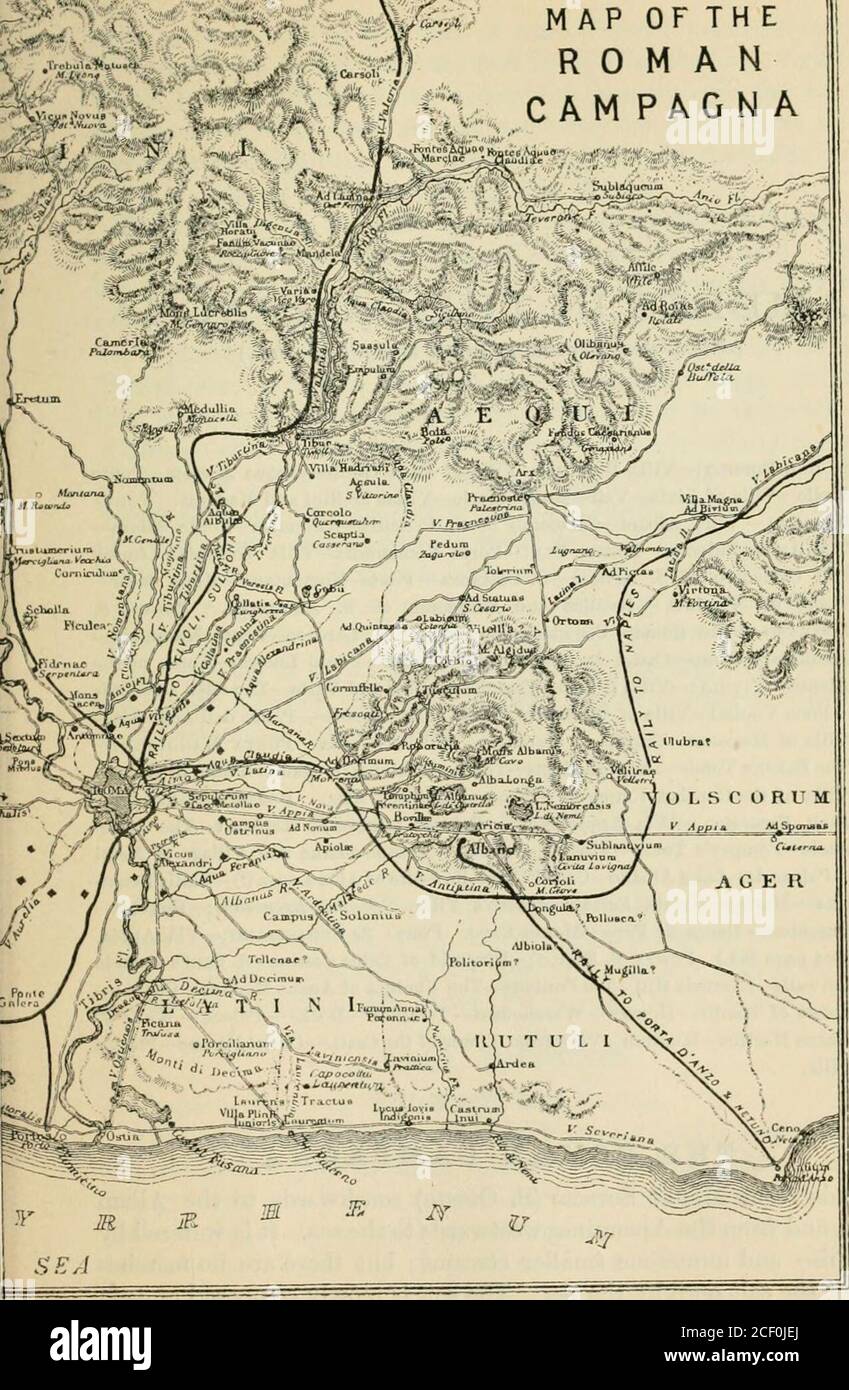 . Rambles in Rome : an archæological and historical guide to the museums, galleries, villas, churches, and antiquities of Rome and the Campagna. MAP OF THEROMANAM PAGN A. RAMBLES IN THE CAMPAGNA. (Any of these Excursions can he made in one day.) Porta del Popolo :—Villa Borghese—Villa di Papa Giulio—Acqua Acetosa—PonteMolle—Villa of Livia—Veii—Monte Mario—Villas Mellini and Madama. PortaSalara: — Villa Albani—Catacomb of S. Priscilla—Antemnw—Ponte Salara—The Anio—Fidena;. Porta Pia :—Porta Nomentana—Villa Torlonia—Churchand Catacomb of S. Agnese — S. Costanza—Ponte Nomentana—Mons Sacer—Tomb of Stock Photohttps://www.alamy.com/image-license-details/?v=1https://www.alamy.com/rambles-in-rome-an-archological-and-historical-guide-to-the-museums-galleries-villas-churches-and-antiquities-of-rome-and-the-campagna-map-of-theromanam-pagn-a-rambles-in-the-campagna-any-of-these-excursions-can-he-made-in-one-day-porta-del-popolo-villa-borghesevilla-di-papa-giulioacqua-acetosapontemollevilla-of-liviaveiimonte-mariovillas-mellini-and-madama-portasalara-villa-albanicatacomb-of-s-priscillaantemnwponte-salarathe-aniofidena-porta-pia-porta-nomentanavilla-torloniachurchand-catacomb-of-s-agnese-s-costanzaponte-nomentanamons-sacertomb-of-image370652090.html
. Rambles in Rome : an archæological and historical guide to the museums, galleries, villas, churches, and antiquities of Rome and the Campagna. MAP OF THEROMANAM PAGN A. RAMBLES IN THE CAMPAGNA. (Any of these Excursions can he made in one day.) Porta del Popolo :—Villa Borghese—Villa di Papa Giulio—Acqua Acetosa—PonteMolle—Villa of Livia—Veii—Monte Mario—Villas Mellini and Madama. PortaSalara: — Villa Albani—Catacomb of S. Priscilla—Antemnw—Ponte Salara—The Anio—Fidena;. Porta Pia :—Porta Nomentana—Villa Torlonia—Churchand Catacomb of S. Agnese — S. Costanza—Ponte Nomentana—Mons Sacer—Tomb of Stock Photohttps://www.alamy.com/image-license-details/?v=1https://www.alamy.com/rambles-in-rome-an-archological-and-historical-guide-to-the-museums-galleries-villas-churches-and-antiquities-of-rome-and-the-campagna-map-of-theromanam-pagn-a-rambles-in-the-campagna-any-of-these-excursions-can-he-made-in-one-day-porta-del-popolo-villa-borghesevilla-di-papa-giulioacqua-acetosapontemollevilla-of-liviaveiimonte-mariovillas-mellini-and-madama-portasalara-villa-albanicatacomb-of-s-priscillaantemnwponte-salarathe-aniofidena-porta-pia-porta-nomentanavilla-torloniachurchand-catacomb-of-s-agnese-s-costanzaponte-nomentanamons-sacertomb-of-image370652090.htmlRM2CF0JEJ–. Rambles in Rome : an archæological and historical guide to the museums, galleries, villas, churches, and antiquities of Rome and the Campagna. MAP OF THEROMANAM PAGN A. RAMBLES IN THE CAMPAGNA. (Any of these Excursions can he made in one day.) Porta del Popolo :—Villa Borghese—Villa di Papa Giulio—Acqua Acetosa—PonteMolle—Villa of Livia—Veii—Monte Mario—Villas Mellini and Madama. PortaSalara: — Villa Albani—Catacomb of S. Priscilla—Antemnw—Ponte Salara—The Anio—Fidena;. Porta Pia :—Porta Nomentana—Villa Torlonia—Churchand Catacomb of S. Agnese — S. Costanza—Ponte Nomentana—Mons Sacer—Tomb of
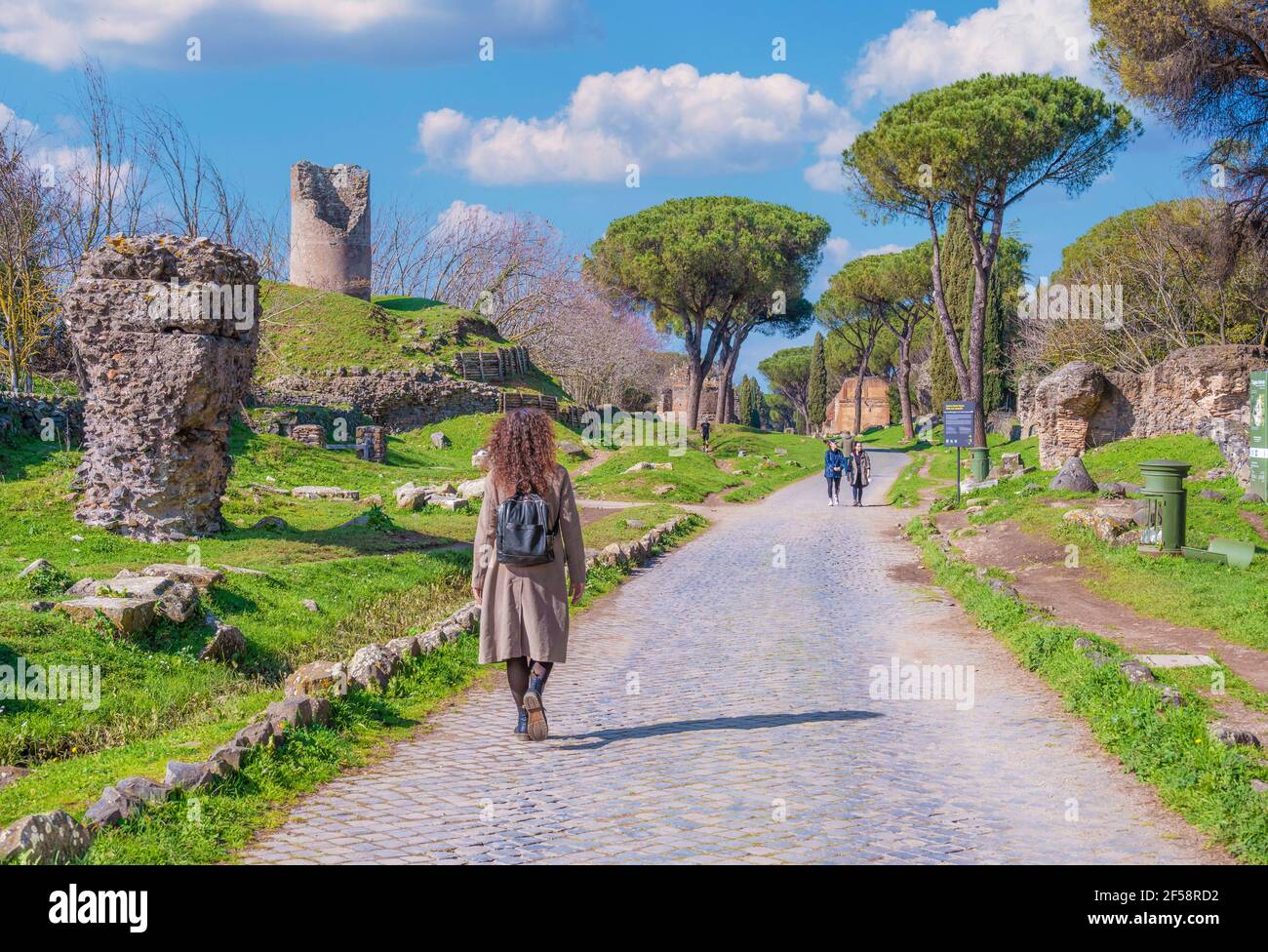 Rome (Italy) - The archeological ruins in the Appian Way of Roma (in italian: 'via Appia Antica'), the most important Roman road of the ancient empire Stock Photohttps://www.alamy.com/image-license-details/?v=1https://www.alamy.com/rome-italy-the-archeological-ruins-in-the-appian-way-of-roma-in-italian-via-appia-antica-the-most-important-roman-road-of-the-ancient-empire-image416316126.html
Rome (Italy) - The archeological ruins in the Appian Way of Roma (in italian: 'via Appia Antica'), the most important Roman road of the ancient empire Stock Photohttps://www.alamy.com/image-license-details/?v=1https://www.alamy.com/rome-italy-the-archeological-ruins-in-the-appian-way-of-roma-in-italian-via-appia-antica-the-most-important-roman-road-of-the-ancient-empire-image416316126.htmlRF2F58RD2–Rome (Italy) - The archeological ruins in the Appian Way of Roma (in italian: 'via Appia Antica'), the most important Roman road of the ancient empire
 . Good Shepherd in catacomb of Priscilla (Second half of the 3rd century) . 1903. Wilpert, Joseph (1857—1944) 250 Good Shepherd Catacomb of Priscilla Stock Photohttps://www.alamy.com/image-license-details/?v=1https://www.alamy.com/good-shepherd-in-catacomb-of-priscilla-second-half-of-the-3rd-century-1903-wilpert-joseph-18571944-250-good-shepherd-catacomb-of-priscilla-image188294734.html
. Good Shepherd in catacomb of Priscilla (Second half of the 3rd century) . 1903. Wilpert, Joseph (1857—1944) 250 Good Shepherd Catacomb of Priscilla Stock Photohttps://www.alamy.com/image-license-details/?v=1https://www.alamy.com/good-shepherd-in-catacomb-of-priscilla-second-half-of-the-3rd-century-1903-wilpert-joseph-18571944-250-good-shepherd-catacomb-of-priscilla-image188294734.htmlRMMX9FRX–. Good Shepherd in catacomb of Priscilla (Second half of the 3rd century) . 1903. Wilpert, Joseph (1857—1944) 250 Good Shepherd Catacomb of Priscilla
 For the celebration of the feast of all the dead Pope Francis Celebrates Mass in the Catacombs of Priscilla in Rome, Italy on November 2, 2019. It was the first time in his life that pope Francis visits a catacomb. The catacombs were used for early Christians burials from the late 2nd-4th Century. The labyrinthine cemetery complex stretching for 13 kilometers over several levels underneath northern Rome is known as the 'Queen of the catacombs' because it features burial chambers of popes and a tiny, delicate fresco of the Madonna nursing Jesus dating from around 230-240 A.D. Photo by ABACAPRES Stock Photohttps://www.alamy.com/image-license-details/?v=1https://www.alamy.com/for-the-celebration-of-the-feast-of-all-the-dead-pope-francis-celebrates-mass-in-the-catacombs-of-priscilla-in-rome-italy-on-november-2-2019-it-was-the-first-time-in-his-life-that-pope-francis-visits-a-catacomb-the-catacombs-were-used-for-early-christians-burials-from-the-late-2nd-4thcentury-the-labyrinthine-cemetery-complex-stretching-for-13-kilometers-over-several-levels-underneath-northern-rome-is-known-as-the-queen-of-the-catacombs-because-it-features-burial-chambers-of-popes-and-a-tiny-delicate-fresco-of-the-madonna-nursing-jesus-dating-from-around-230-240-ad-photo-by-abacapres-image387750379.html
For the celebration of the feast of all the dead Pope Francis Celebrates Mass in the Catacombs of Priscilla in Rome, Italy on November 2, 2019. It was the first time in his life that pope Francis visits a catacomb. The catacombs were used for early Christians burials from the late 2nd-4th Century. The labyrinthine cemetery complex stretching for 13 kilometers over several levels underneath northern Rome is known as the 'Queen of the catacombs' because it features burial chambers of popes and a tiny, delicate fresco of the Madonna nursing Jesus dating from around 230-240 A.D. Photo by ABACAPRES Stock Photohttps://www.alamy.com/image-license-details/?v=1https://www.alamy.com/for-the-celebration-of-the-feast-of-all-the-dead-pope-francis-celebrates-mass-in-the-catacombs-of-priscilla-in-rome-italy-on-november-2-2019-it-was-the-first-time-in-his-life-that-pope-francis-visits-a-catacomb-the-catacombs-were-used-for-early-christians-burials-from-the-late-2nd-4thcentury-the-labyrinthine-cemetery-complex-stretching-for-13-kilometers-over-several-levels-underneath-northern-rome-is-known-as-the-queen-of-the-catacombs-because-it-features-burial-chambers-of-popes-and-a-tiny-delicate-fresco-of-the-madonna-nursing-jesus-dating-from-around-230-240-ad-photo-by-abacapres-image387750379.htmlRM2DERFFR–For the celebration of the feast of all the dead Pope Francis Celebrates Mass in the Catacombs of Priscilla in Rome, Italy on November 2, 2019. It was the first time in his life that pope Francis visits a catacomb. The catacombs were used for early Christians burials from the late 2nd-4th Century. The labyrinthine cemetery complex stretching for 13 kilometers over several levels underneath northern Rome is known as the 'Queen of the catacombs' because it features burial chambers of popes and a tiny, delicate fresco of the Madonna nursing Jesus dating from around 230-240 A.D. Photo by ABACAPRES
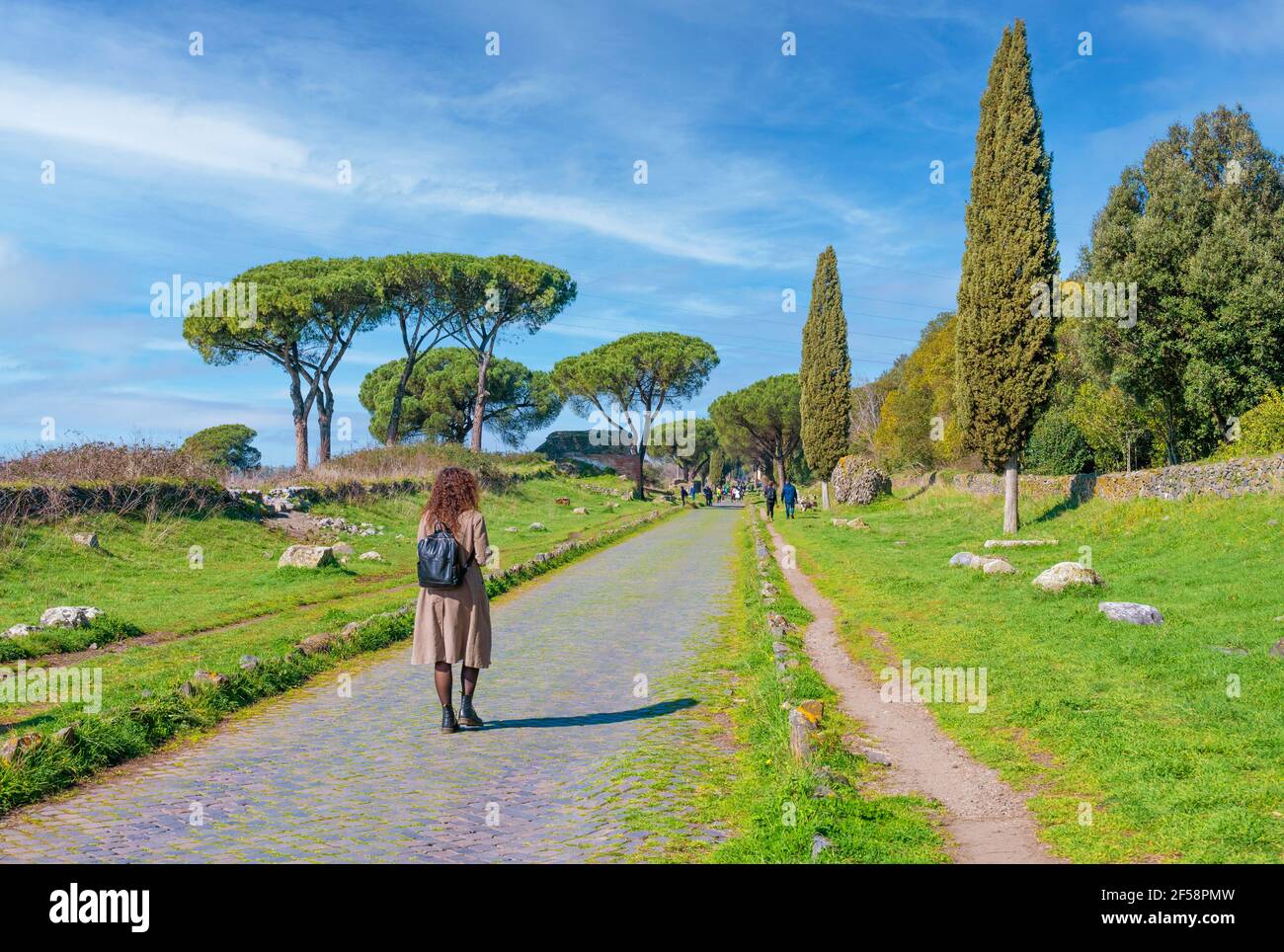 Rome (Italy) - The archeological ruins in the Appian Way of Roma (in italian: 'via Appia Antica'), the most important Roman road of the ancient empire Stock Photohttps://www.alamy.com/image-license-details/?v=1https://www.alamy.com/rome-italy-the-archeological-ruins-in-the-appian-way-of-roma-in-italian-via-appia-antica-the-most-important-roman-road-of-the-ancient-empire-image416315561.html
Rome (Italy) - The archeological ruins in the Appian Way of Roma (in italian: 'via Appia Antica'), the most important Roman road of the ancient empire Stock Photohttps://www.alamy.com/image-license-details/?v=1https://www.alamy.com/rome-italy-the-archeological-ruins-in-the-appian-way-of-roma-in-italian-via-appia-antica-the-most-important-roman-road-of-the-ancient-empire-image416315561.htmlRF2F58PMW–Rome (Italy) - The archeological ruins in the Appian Way of Roma (in italian: 'via Appia Antica'), the most important Roman road of the ancient empire
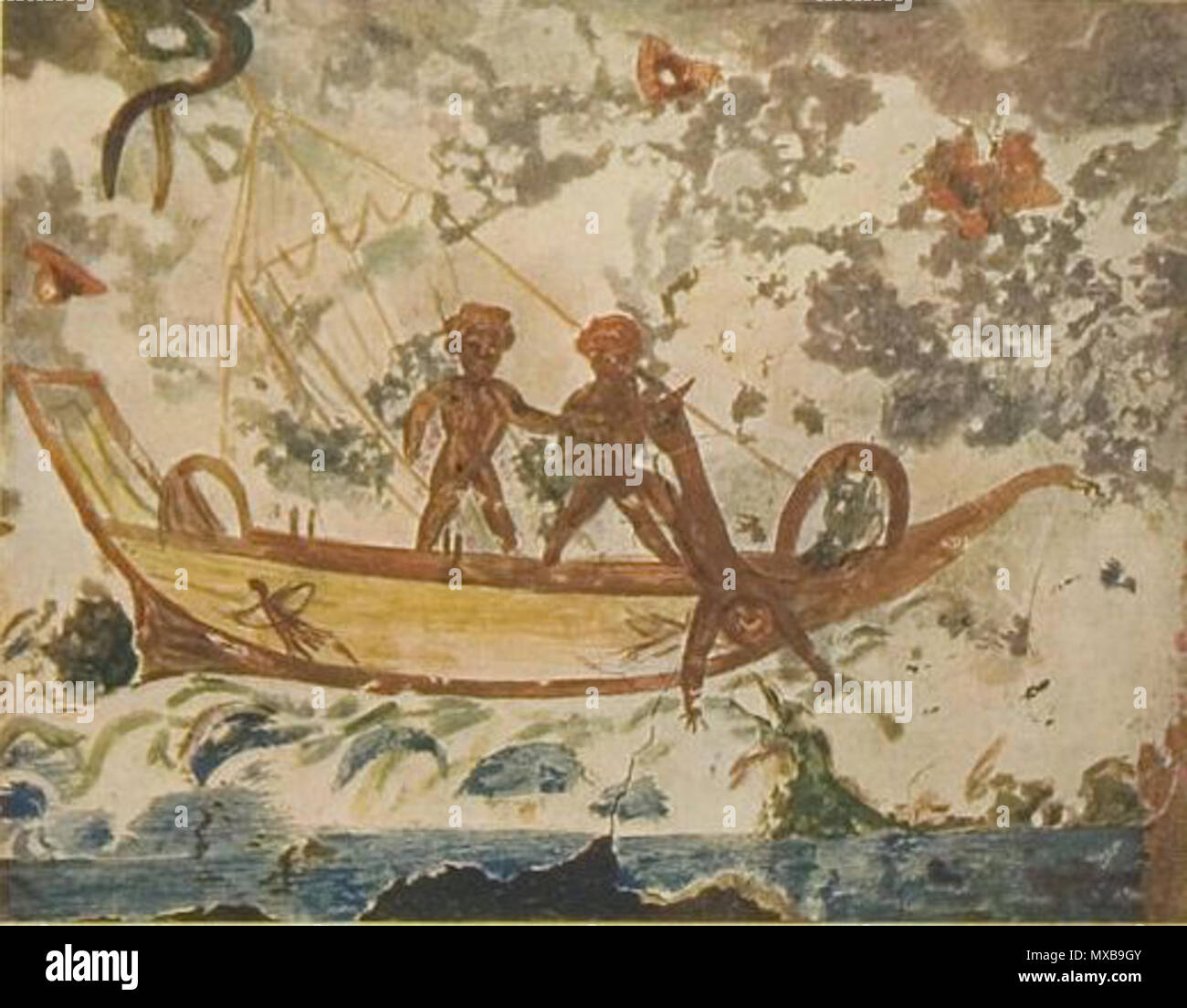 . prophet Jonah being thrown into the Sea, catacombe di Priscilla (photo by Wilpert, Joseph. Die Malereien der Katakomben Roms, 1903) . Paleochristian art before V c.. anonimus 324 Jonah catacomb Stock Photohttps://www.alamy.com/image-license-details/?v=1https://www.alamy.com/prophet-jonah-being-thrown-into-the-sea-catacombe-di-priscilla-photo-by-wilpert-joseph-die-malereien-der-katakomben-roms-1903-paleochristian-art-before-v-c-anonimus-324-jonah-catacomb-image188333739.html
. prophet Jonah being thrown into the Sea, catacombe di Priscilla (photo by Wilpert, Joseph. Die Malereien der Katakomben Roms, 1903) . Paleochristian art before V c.. anonimus 324 Jonah catacomb Stock Photohttps://www.alamy.com/image-license-details/?v=1https://www.alamy.com/prophet-jonah-being-thrown-into-the-sea-catacombe-di-priscilla-photo-by-wilpert-joseph-die-malereien-der-katakomben-roms-1903-paleochristian-art-before-v-c-anonimus-324-jonah-catacomb-image188333739.htmlRMMXB9GY–. prophet Jonah being thrown into the Sea, catacombe di Priscilla (photo by Wilpert, Joseph. Die Malereien der Katakomben Roms, 1903) . Paleochristian art before V c.. anonimus 324 Jonah catacomb
 For the celebration of the feast of all the dead Pope Francis Celebrates Mass in the Catacombs of Priscilla in Rome, Italy on November 2, 2019. It was the first time in his life that pope Francis visits a catacomb. The catacombs were used for early Christians burials from the late 2nd-4th Century. The labyrinthine cemetery complex stretching for 13 kilometers over several levels underneath northern Rome is known as the 'Queen of the catacombs' because it features burial chambers of popes and a tiny, delicate fresco of the Madonna nursing Jesus dating from around 230-240 A.D. Photo by ABACAPRES Stock Photohttps://www.alamy.com/image-license-details/?v=1https://www.alamy.com/for-the-celebration-of-the-feast-of-all-the-dead-pope-francis-celebrates-mass-in-the-catacombs-of-priscilla-in-rome-italy-on-november-2-2019-it-was-the-first-time-in-his-life-that-pope-francis-visits-a-catacomb-the-catacombs-were-used-for-early-christians-burials-from-the-late-2nd-4thcentury-the-labyrinthine-cemetery-complex-stretching-for-13-kilometers-over-several-levels-underneath-northern-rome-is-known-as-the-queen-of-the-catacombs-because-it-features-burial-chambers-of-popes-and-a-tiny-delicate-fresco-of-the-madonna-nursing-jesus-dating-from-around-230-240-ad-photo-by-abacapres-image387750382.html
For the celebration of the feast of all the dead Pope Francis Celebrates Mass in the Catacombs of Priscilla in Rome, Italy on November 2, 2019. It was the first time in his life that pope Francis visits a catacomb. The catacombs were used for early Christians burials from the late 2nd-4th Century. The labyrinthine cemetery complex stretching for 13 kilometers over several levels underneath northern Rome is known as the 'Queen of the catacombs' because it features burial chambers of popes and a tiny, delicate fresco of the Madonna nursing Jesus dating from around 230-240 A.D. Photo by ABACAPRES Stock Photohttps://www.alamy.com/image-license-details/?v=1https://www.alamy.com/for-the-celebration-of-the-feast-of-all-the-dead-pope-francis-celebrates-mass-in-the-catacombs-of-priscilla-in-rome-italy-on-november-2-2019-it-was-the-first-time-in-his-life-that-pope-francis-visits-a-catacomb-the-catacombs-were-used-for-early-christians-burials-from-the-late-2nd-4thcentury-the-labyrinthine-cemetery-complex-stretching-for-13-kilometers-over-several-levels-underneath-northern-rome-is-known-as-the-queen-of-the-catacombs-because-it-features-burial-chambers-of-popes-and-a-tiny-delicate-fresco-of-the-madonna-nursing-jesus-dating-from-around-230-240-ad-photo-by-abacapres-image387750382.htmlRM2DERFFX–For the celebration of the feast of all the dead Pope Francis Celebrates Mass in the Catacombs of Priscilla in Rome, Italy on November 2, 2019. It was the first time in his life that pope Francis visits a catacomb. The catacombs were used for early Christians burials from the late 2nd-4th Century. The labyrinthine cemetery complex stretching for 13 kilometers over several levels underneath northern Rome is known as the 'Queen of the catacombs' because it features burial chambers of popes and a tiny, delicate fresco of the Madonna nursing Jesus dating from around 230-240 A.D. Photo by ABACAPRES
 Rome (Italy) - The archeological ruins in the Appian Way of Roma (in italian: 'via Appia Antica'), the most important Roman road of the ancient empire Stock Photohttps://www.alamy.com/image-license-details/?v=1https://www.alamy.com/rome-italy-the-archeological-ruins-in-the-appian-way-of-roma-in-italian-via-appia-antica-the-most-important-roman-road-of-the-ancient-empire-image416316396.html
Rome (Italy) - The archeological ruins in the Appian Way of Roma (in italian: 'via Appia Antica'), the most important Roman road of the ancient empire Stock Photohttps://www.alamy.com/image-license-details/?v=1https://www.alamy.com/rome-italy-the-archeological-ruins-in-the-appian-way-of-roma-in-italian-via-appia-antica-the-most-important-roman-road-of-the-ancient-empire-image416316396.htmlRF2F58RPM–Rome (Italy) - The archeological ruins in the Appian Way of Roma (in italian: 'via Appia Antica'), the most important Roman road of the ancient empire
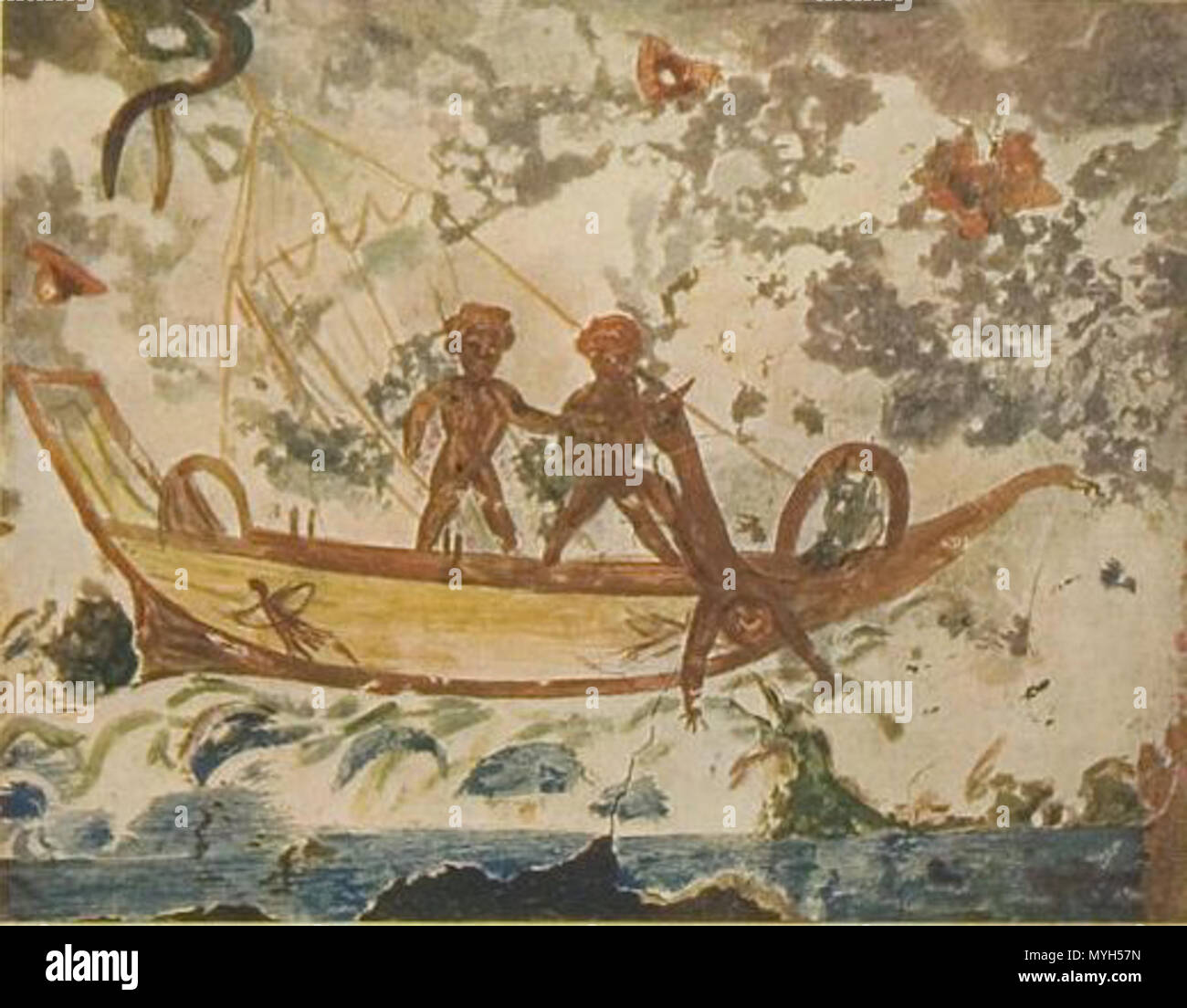 . prophet Jonah being thrown into the Sea, catacombe di Priscilla (photo by Wilpert, Joseph. Die Malereien der Katakomben Roms, 1903) . Paleochristian art before V c.. anonimus 281 Jonah catacomb Stock Photohttps://www.alamy.com/image-license-details/?v=1https://www.alamy.com/prophet-jonah-being-thrown-into-the-sea-catacombe-di-priscilla-photo-by-wilpert-joseph-die-malereien-der-katakomben-roms-1903-paleochristian-art-before-v-c-anonimus-281-jonah-catacomb-image189076713.html
. prophet Jonah being thrown into the Sea, catacombe di Priscilla (photo by Wilpert, Joseph. Die Malereien der Katakomben Roms, 1903) . Paleochristian art before V c.. anonimus 281 Jonah catacomb Stock Photohttps://www.alamy.com/image-license-details/?v=1https://www.alamy.com/prophet-jonah-being-thrown-into-the-sea-catacombe-di-priscilla-photo-by-wilpert-joseph-die-malereien-der-katakomben-roms-1903-paleochristian-art-before-v-c-anonimus-281-jonah-catacomb-image189076713.htmlRMMYH57N–. prophet Jonah being thrown into the Sea, catacombe di Priscilla (photo by Wilpert, Joseph. Die Malereien der Katakomben Roms, 1903) . Paleochristian art before V c.. anonimus 281 Jonah catacomb
 For the celebration of the feast of all the dead Pope Francis Celebrates Mass in the Catacombs of Priscilla in Rome, Italy on November 2, 2019. It was the first time in his life that pope Francis visits a catacomb. The catacombs were used for early Christians burials from the late 2nd-4th Century. The labyrinthine cemetery complex stretching for 13 kilometers over several levels underneath northern Rome is known as the 'Queen of the catacombs' because it features burial chambers of popes and a tiny, delicate fresco of the Madonna nursing Jesus dating from around 230-240 A.D. Photo by ABACAPRES Stock Photohttps://www.alamy.com/image-license-details/?v=1https://www.alamy.com/for-the-celebration-of-the-feast-of-all-the-dead-pope-francis-celebrates-mass-in-the-catacombs-of-priscilla-in-rome-italy-on-november-2-2019-it-was-the-first-time-in-his-life-that-pope-francis-visits-a-catacomb-the-catacombs-were-used-for-early-christians-burials-from-the-late-2nd-4thcentury-the-labyrinthine-cemetery-complex-stretching-for-13-kilometers-over-several-levels-underneath-northern-rome-is-known-as-the-queen-of-the-catacombs-because-it-features-burial-chambers-of-popes-and-a-tiny-delicate-fresco-of-the-madonna-nursing-jesus-dating-from-around-230-240-ad-photo-by-abacapres-image387750363.html
For the celebration of the feast of all the dead Pope Francis Celebrates Mass in the Catacombs of Priscilla in Rome, Italy on November 2, 2019. It was the first time in his life that pope Francis visits a catacomb. The catacombs were used for early Christians burials from the late 2nd-4th Century. The labyrinthine cemetery complex stretching for 13 kilometers over several levels underneath northern Rome is known as the 'Queen of the catacombs' because it features burial chambers of popes and a tiny, delicate fresco of the Madonna nursing Jesus dating from around 230-240 A.D. Photo by ABACAPRES Stock Photohttps://www.alamy.com/image-license-details/?v=1https://www.alamy.com/for-the-celebration-of-the-feast-of-all-the-dead-pope-francis-celebrates-mass-in-the-catacombs-of-priscilla-in-rome-italy-on-november-2-2019-it-was-the-first-time-in-his-life-that-pope-francis-visits-a-catacomb-the-catacombs-were-used-for-early-christians-burials-from-the-late-2nd-4thcentury-the-labyrinthine-cemetery-complex-stretching-for-13-kilometers-over-several-levels-underneath-northern-rome-is-known-as-the-queen-of-the-catacombs-because-it-features-burial-chambers-of-popes-and-a-tiny-delicate-fresco-of-the-madonna-nursing-jesus-dating-from-around-230-240-ad-photo-by-abacapres-image387750363.htmlRM2DERFF7–For the celebration of the feast of all the dead Pope Francis Celebrates Mass in the Catacombs of Priscilla in Rome, Italy on November 2, 2019. It was the first time in his life that pope Francis visits a catacomb. The catacombs were used for early Christians burials from the late 2nd-4th Century. The labyrinthine cemetery complex stretching for 13 kilometers over several levels underneath northern Rome is known as the 'Queen of the catacombs' because it features burial chambers of popes and a tiny, delicate fresco of the Madonna nursing Jesus dating from around 230-240 A.D. Photo by ABACAPRES
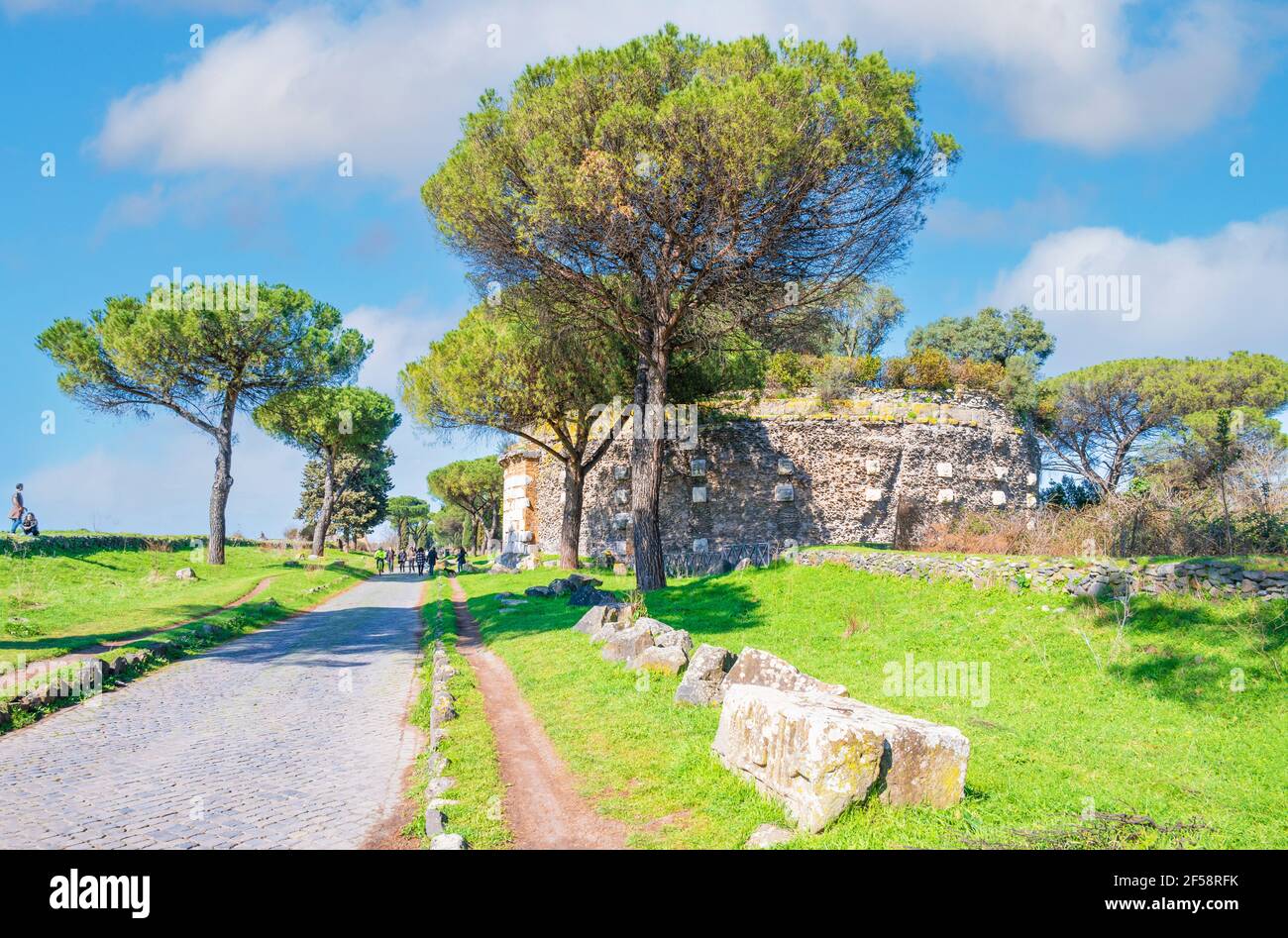 Rome (Italy) - The archeological ruins in the Appian Way of Roma (in italian: 'via Appia Antica'), the most important Roman road of the ancient empire Stock Photohttps://www.alamy.com/image-license-details/?v=1https://www.alamy.com/rome-italy-the-archeological-ruins-in-the-appian-way-of-roma-in-italian-via-appia-antica-the-most-important-roman-road-of-the-ancient-empire-image416316199.html
Rome (Italy) - The archeological ruins in the Appian Way of Roma (in italian: 'via Appia Antica'), the most important Roman road of the ancient empire Stock Photohttps://www.alamy.com/image-license-details/?v=1https://www.alamy.com/rome-italy-the-archeological-ruins-in-the-appian-way-of-roma-in-italian-via-appia-antica-the-most-important-roman-road-of-the-ancient-empire-image416316199.htmlRF2F58RFK–Rome (Italy) - The archeological ruins in the Appian Way of Roma (in italian: 'via Appia Antica'), the most important Roman road of the ancient empire
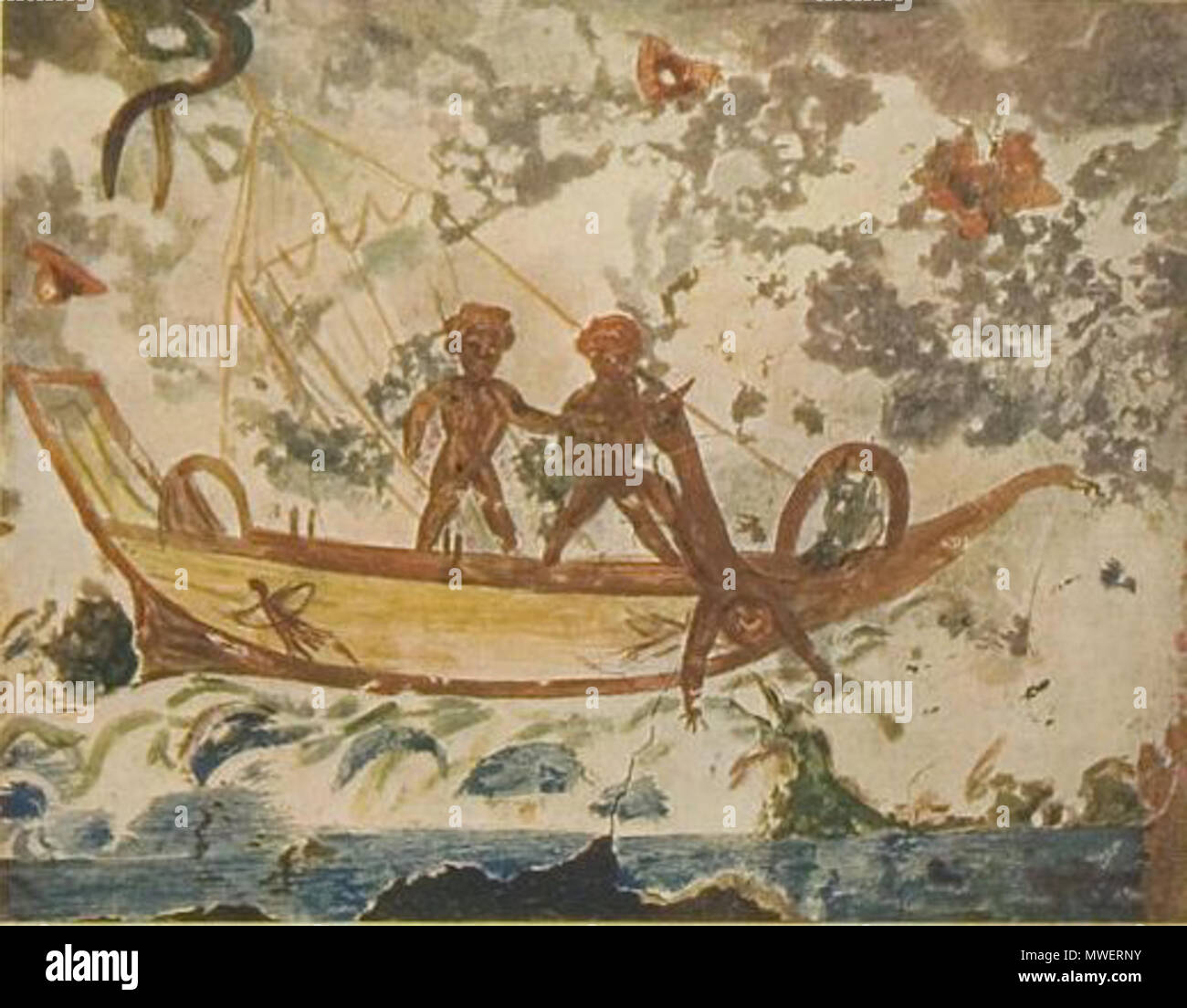 . prophet Jonah being thrown into the Sea, catacombe di Priscilla (photo by Wilpert, Joseph. Die Malereien der Katakomben Roms, 1903) . Paleochristian art before V c.. anonimus 323 Jonah catacomb Stock Photohttps://www.alamy.com/image-license-details/?v=1https://www.alamy.com/prophet-jonah-being-thrown-into-the-sea-catacombe-di-priscilla-photo-by-wilpert-joseph-die-malereien-der-katakomben-roms-1903-paleochristian-art-before-v-c-anonimus-323-jonah-catacomb-image187796055.html
. prophet Jonah being thrown into the Sea, catacombe di Priscilla (photo by Wilpert, Joseph. Die Malereien der Katakomben Roms, 1903) . Paleochristian art before V c.. anonimus 323 Jonah catacomb Stock Photohttps://www.alamy.com/image-license-details/?v=1https://www.alamy.com/prophet-jonah-being-thrown-into-the-sea-catacombe-di-priscilla-photo-by-wilpert-joseph-die-malereien-der-katakomben-roms-1903-paleochristian-art-before-v-c-anonimus-323-jonah-catacomb-image187796055.htmlRMMWERNY–. prophet Jonah being thrown into the Sea, catacombe di Priscilla (photo by Wilpert, Joseph. Die Malereien der Katakomben Roms, 1903) . Paleochristian art before V c.. anonimus 323 Jonah catacomb
 For the celebration of the feast of all the dead Pope Francis Celebrates Mass in the Catacombs of Priscilla in Rome, Italy on November 2, 2019. It was the first time in his life that pope Francis visits a catacomb. The catacombs were used for early Christians burials from the late 2nd-4th Century. The labyrinthine cemetery complex stretching for 13 kilometers over several levels underneath northern Rome is known as the 'Queen of the catacombs' because it features burial chambers of popes and a tiny, delicate fresco of the Madonna nursing Jesus dating from around 230-240 A.D. Photo by ABACAPRES Stock Photohttps://www.alamy.com/image-license-details/?v=1https://www.alamy.com/for-the-celebration-of-the-feast-of-all-the-dead-pope-francis-celebrates-mass-in-the-catacombs-of-priscilla-in-rome-italy-on-november-2-2019-it-was-the-first-time-in-his-life-that-pope-francis-visits-a-catacomb-the-catacombs-were-used-for-early-christians-burials-from-the-late-2nd-4thcentury-the-labyrinthine-cemetery-complex-stretching-for-13-kilometers-over-several-levels-underneath-northern-rome-is-known-as-the-queen-of-the-catacombs-because-it-features-burial-chambers-of-popes-and-a-tiny-delicate-fresco-of-the-madonna-nursing-jesus-dating-from-around-230-240-ad-photo-by-abacapres-image387750357.html
For the celebration of the feast of all the dead Pope Francis Celebrates Mass in the Catacombs of Priscilla in Rome, Italy on November 2, 2019. It was the first time in his life that pope Francis visits a catacomb. The catacombs were used for early Christians burials from the late 2nd-4th Century. The labyrinthine cemetery complex stretching for 13 kilometers over several levels underneath northern Rome is known as the 'Queen of the catacombs' because it features burial chambers of popes and a tiny, delicate fresco of the Madonna nursing Jesus dating from around 230-240 A.D. Photo by ABACAPRES Stock Photohttps://www.alamy.com/image-license-details/?v=1https://www.alamy.com/for-the-celebration-of-the-feast-of-all-the-dead-pope-francis-celebrates-mass-in-the-catacombs-of-priscilla-in-rome-italy-on-november-2-2019-it-was-the-first-time-in-his-life-that-pope-francis-visits-a-catacomb-the-catacombs-were-used-for-early-christians-burials-from-the-late-2nd-4thcentury-the-labyrinthine-cemetery-complex-stretching-for-13-kilometers-over-several-levels-underneath-northern-rome-is-known-as-the-queen-of-the-catacombs-because-it-features-burial-chambers-of-popes-and-a-tiny-delicate-fresco-of-the-madonna-nursing-jesus-dating-from-around-230-240-ad-photo-by-abacapres-image387750357.htmlRM2DERFF1–For the celebration of the feast of all the dead Pope Francis Celebrates Mass in the Catacombs of Priscilla in Rome, Italy on November 2, 2019. It was the first time in his life that pope Francis visits a catacomb. The catacombs were used for early Christians burials from the late 2nd-4th Century. The labyrinthine cemetery complex stretching for 13 kilometers over several levels underneath northern Rome is known as the 'Queen of the catacombs' because it features burial chambers of popes and a tiny, delicate fresco of the Madonna nursing Jesus dating from around 230-240 A.D. Photo by ABACAPRES
 Rome (Italy) - The archeological ruins in the Appian Way of Roma (in italian: 'via Appia Antica'), the most important Roman road of the ancient empire Stock Photohttps://www.alamy.com/image-license-details/?v=1https://www.alamy.com/rome-italy-the-archeological-ruins-in-the-appian-way-of-roma-in-italian-via-appia-antica-the-most-important-roman-road-of-the-ancient-empire-image416315760.html
Rome (Italy) - The archeological ruins in the Appian Way of Roma (in italian: 'via Appia Antica'), the most important Roman road of the ancient empire Stock Photohttps://www.alamy.com/image-license-details/?v=1https://www.alamy.com/rome-italy-the-archeological-ruins-in-the-appian-way-of-roma-in-italian-via-appia-antica-the-most-important-roman-road-of-the-ancient-empire-image416315760.htmlRF2F58R00–Rome (Italy) - The archeological ruins in the Appian Way of Roma (in italian: 'via Appia Antica'), the most important Roman road of the ancient empire
 . Virgin and Child with Balaam the Prophet . Image of the Virgin Mary, mother of Jesus, in the Catacomb of Priscilla in Rome. It depicts her nursing the Infant Jesus. This is earliest known image of Mary and the Infant Jesus independent of the Magi episode. The figure at the left appears to be the prophet Balaam pointing to a star (outside the frame). The star is from Numbers 24:17. late 2nd century 386 Madonna catacomb Stock Photohttps://www.alamy.com/image-license-details/?v=1https://www.alamy.com/virgin-and-child-with-balaam-the-prophet-image-of-the-virgin-mary-mother-of-jesus-in-the-catacomb-of-priscilla-in-rome-it-depicts-her-nursing-the-infant-jesus-this-is-earliest-known-image-of-mary-and-the-infant-jesus-independent-of-the-magi-episode-the-figure-at-the-left-appears-to-be-the-prophet-balaam-pointing-to-a-star-outside-the-frame-the-star-is-from-numbers-2417-late-2nd-century-386-madonna-catacomb-image188353604.html
. Virgin and Child with Balaam the Prophet . Image of the Virgin Mary, mother of Jesus, in the Catacomb of Priscilla in Rome. It depicts her nursing the Infant Jesus. This is earliest known image of Mary and the Infant Jesus independent of the Magi episode. The figure at the left appears to be the prophet Balaam pointing to a star (outside the frame). The star is from Numbers 24:17. late 2nd century 386 Madonna catacomb Stock Photohttps://www.alamy.com/image-license-details/?v=1https://www.alamy.com/virgin-and-child-with-balaam-the-prophet-image-of-the-virgin-mary-mother-of-jesus-in-the-catacomb-of-priscilla-in-rome-it-depicts-her-nursing-the-infant-jesus-this-is-earliest-known-image-of-mary-and-the-infant-jesus-independent-of-the-magi-episode-the-figure-at-the-left-appears-to-be-the-prophet-balaam-pointing-to-a-star-outside-the-frame-the-star-is-from-numbers-2417-late-2nd-century-386-madonna-catacomb-image188353604.htmlRMMXC6XC–. Virgin and Child with Balaam the Prophet . Image of the Virgin Mary, mother of Jesus, in the Catacomb of Priscilla in Rome. It depicts her nursing the Infant Jesus. This is earliest known image of Mary and the Infant Jesus independent of the Magi episode. The figure at the left appears to be the prophet Balaam pointing to a star (outside the frame). The star is from Numbers 24:17. late 2nd century 386 Madonna catacomb
 For the celebration of the feast of all the dead Pope Francis Celebrates Mass in the Catacombs of Priscilla in Rome, Italy on November 2, 2019. It was the first time in his life that pope Francis visits a catacomb. The catacombs were used for early Christians burials from the late 2nd-4th Century. The labyrinthine cemetery complex stretching for 13 kilometers over several levels underneath northern Rome is known as the 'Queen of the catacombs' because it features burial chambers of popes and a tiny, delicate fresco of the Madonna nursing Jesus dating from around 230-240 A.D. Photo by ABACAPRES Stock Photohttps://www.alamy.com/image-license-details/?v=1https://www.alamy.com/for-the-celebration-of-the-feast-of-all-the-dead-pope-francis-celebrates-mass-in-the-catacombs-of-priscilla-in-rome-italy-on-november-2-2019-it-was-the-first-time-in-his-life-that-pope-francis-visits-a-catacomb-the-catacombs-were-used-for-early-christians-burials-from-the-late-2nd-4thcentury-the-labyrinthine-cemetery-complex-stretching-for-13-kilometers-over-several-levels-underneath-northern-rome-is-known-as-the-queen-of-the-catacombs-because-it-features-burial-chambers-of-popes-and-a-tiny-delicate-fresco-of-the-madonna-nursing-jesus-dating-from-around-230-240-ad-photo-by-abacapres-image387750396.html
For the celebration of the feast of all the dead Pope Francis Celebrates Mass in the Catacombs of Priscilla in Rome, Italy on November 2, 2019. It was the first time in his life that pope Francis visits a catacomb. The catacombs were used for early Christians burials from the late 2nd-4th Century. The labyrinthine cemetery complex stretching for 13 kilometers over several levels underneath northern Rome is known as the 'Queen of the catacombs' because it features burial chambers of popes and a tiny, delicate fresco of the Madonna nursing Jesus dating from around 230-240 A.D. Photo by ABACAPRES Stock Photohttps://www.alamy.com/image-license-details/?v=1https://www.alamy.com/for-the-celebration-of-the-feast-of-all-the-dead-pope-francis-celebrates-mass-in-the-catacombs-of-priscilla-in-rome-italy-on-november-2-2019-it-was-the-first-time-in-his-life-that-pope-francis-visits-a-catacomb-the-catacombs-were-used-for-early-christians-burials-from-the-late-2nd-4thcentury-the-labyrinthine-cemetery-complex-stretching-for-13-kilometers-over-several-levels-underneath-northern-rome-is-known-as-the-queen-of-the-catacombs-because-it-features-burial-chambers-of-popes-and-a-tiny-delicate-fresco-of-the-madonna-nursing-jesus-dating-from-around-230-240-ad-photo-by-abacapres-image387750396.htmlRM2DERFGC–For the celebration of the feast of all the dead Pope Francis Celebrates Mass in the Catacombs of Priscilla in Rome, Italy on November 2, 2019. It was the first time in his life that pope Francis visits a catacomb. The catacombs were used for early Christians burials from the late 2nd-4th Century. The labyrinthine cemetery complex stretching for 13 kilometers over several levels underneath northern Rome is known as the 'Queen of the catacombs' because it features burial chambers of popes and a tiny, delicate fresco of the Madonna nursing Jesus dating from around 230-240 A.D. Photo by ABACAPRES
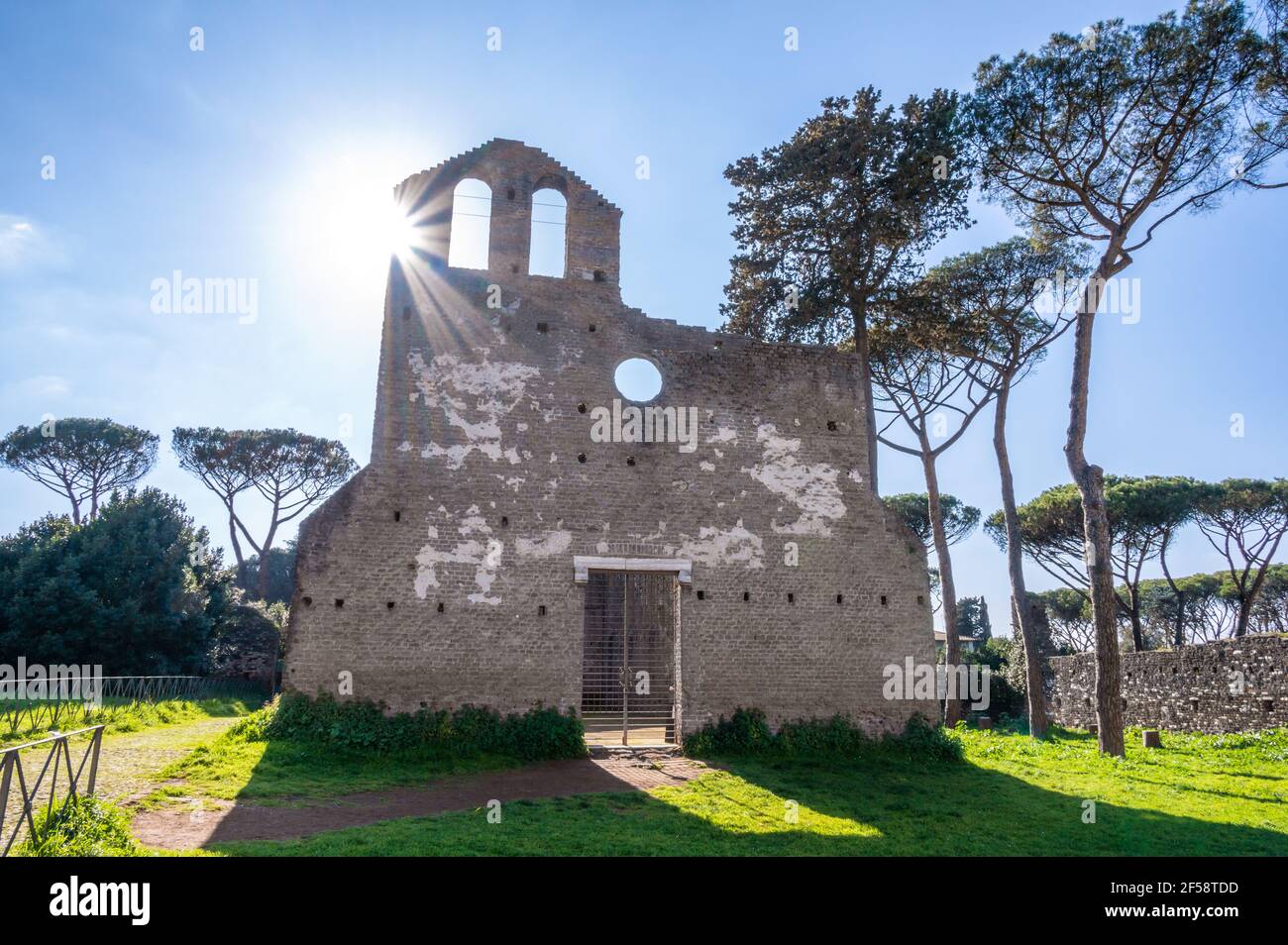 Rome (Italy) - The archeological ruins in the Appian Way of Roma (in italian: 'via Appia Antica'), the most important Roman road of the ancient empire Stock Photohttps://www.alamy.com/image-license-details/?v=1https://www.alamy.com/rome-italy-the-archeological-ruins-in-the-appian-way-of-roma-in-italian-via-appia-antica-the-most-important-roman-road-of-the-ancient-empire-image416316921.html
Rome (Italy) - The archeological ruins in the Appian Way of Roma (in italian: 'via Appia Antica'), the most important Roman road of the ancient empire Stock Photohttps://www.alamy.com/image-license-details/?v=1https://www.alamy.com/rome-italy-the-archeological-ruins-in-the-appian-way-of-roma-in-italian-via-appia-antica-the-most-important-roman-road-of-the-ancient-empire-image416316921.htmlRF2F58TDD–Rome (Italy) - The archeological ruins in the Appian Way of Roma (in italian: 'via Appia Antica'), the most important Roman road of the ancient empire
 . Virgin and Child with Balaam the Prophet . Image of the Virgin Mary, mother of Jesus, in the Catacomb of Priscilla in Rome. It depicts her nursing the Infant Jesus. This is earliest known image of Mary and the Infant Jesus independent of the Magi episode. The figure at the left appears to be the prophet Balaam pointing to a star (outside the frame). The star is from Numbers 24:17. late 2nd century 337 Madonna catacomb Stock Photohttps://www.alamy.com/image-license-details/?v=1https://www.alamy.com/virgin-and-child-with-balaam-the-prophet-image-of-the-virgin-mary-mother-of-jesus-in-the-catacomb-of-priscilla-in-rome-it-depicts-her-nursing-the-infant-jesus-this-is-earliest-known-image-of-mary-and-the-infant-jesus-independent-of-the-magi-episode-the-figure-at-the-left-appears-to-be-the-prophet-balaam-pointing-to-a-star-outside-the-frame-the-star-is-from-numbers-2417-late-2nd-century-337-madonna-catacomb-image189119593.html
. Virgin and Child with Balaam the Prophet . Image of the Virgin Mary, mother of Jesus, in the Catacomb of Priscilla in Rome. It depicts her nursing the Infant Jesus. This is earliest known image of Mary and the Infant Jesus independent of the Magi episode. The figure at the left appears to be the prophet Balaam pointing to a star (outside the frame). The star is from Numbers 24:17. late 2nd century 337 Madonna catacomb Stock Photohttps://www.alamy.com/image-license-details/?v=1https://www.alamy.com/virgin-and-child-with-balaam-the-prophet-image-of-the-virgin-mary-mother-of-jesus-in-the-catacomb-of-priscilla-in-rome-it-depicts-her-nursing-the-infant-jesus-this-is-earliest-known-image-of-mary-and-the-infant-jesus-independent-of-the-magi-episode-the-figure-at-the-left-appears-to-be-the-prophet-balaam-pointing-to-a-star-outside-the-frame-the-star-is-from-numbers-2417-late-2nd-century-337-madonna-catacomb-image189119593.htmlRMMYK3Y5–. Virgin and Child with Balaam the Prophet . Image of the Virgin Mary, mother of Jesus, in the Catacomb of Priscilla in Rome. It depicts her nursing the Infant Jesus. This is earliest known image of Mary and the Infant Jesus independent of the Magi episode. The figure at the left appears to be the prophet Balaam pointing to a star (outside the frame). The star is from Numbers 24:17. late 2nd century 337 Madonna catacomb
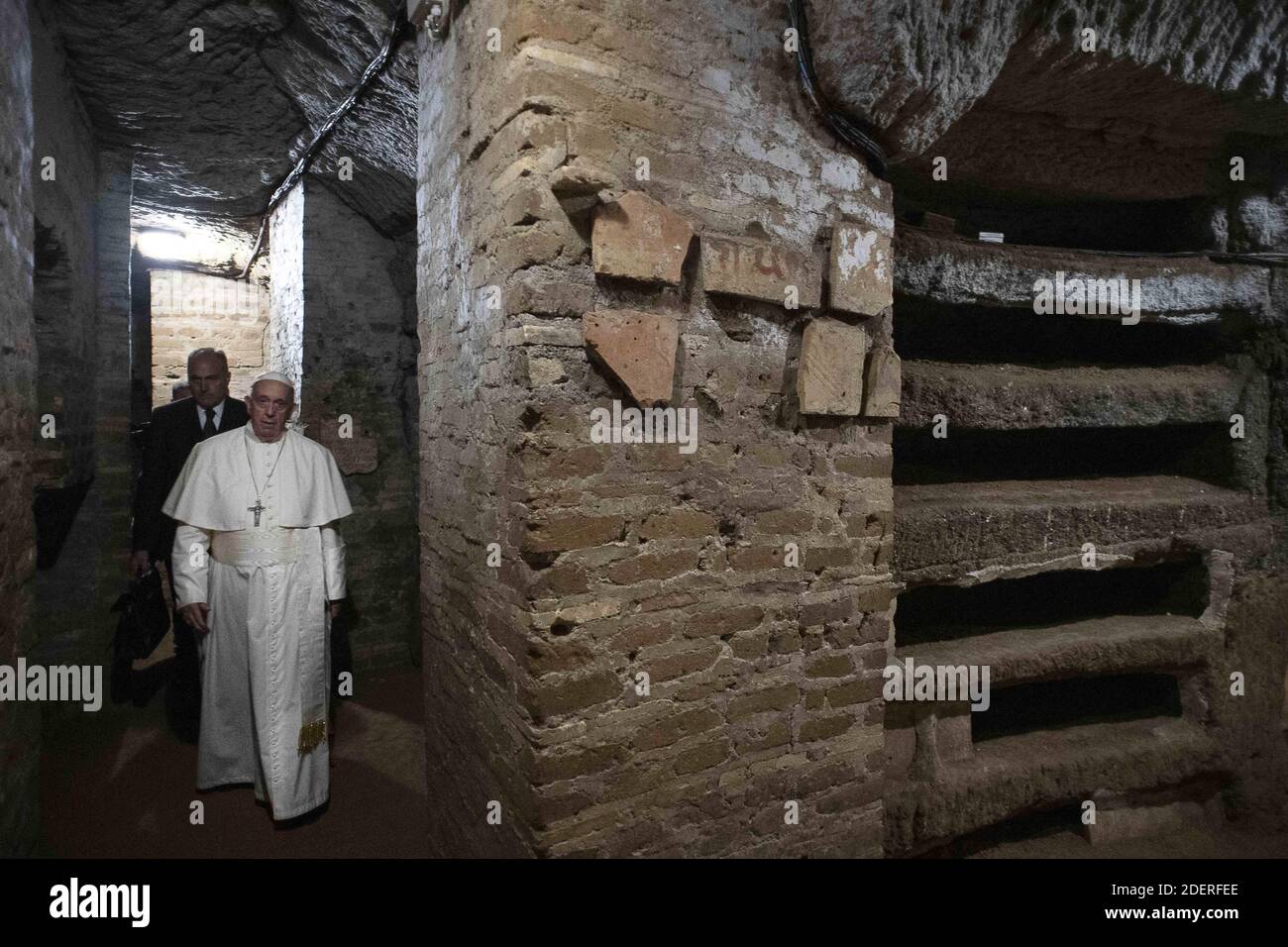 For the celebration of the feast of all the dead Pope Francis Celebrates Mass in the Catacombs of Priscilla in Rome, Italy on November 2, 2019. It was the first time in his life that pope Francis visits a catacomb. The catacombs were used for early Christians burials from the late 2nd-4th Century. The labyrinthine cemetery complex stretching for 13 kilometers over several levels underneath northern Rome is known as the 'Queen of the catacombs' because it features burial chambers of popes and a tiny, delicate fresco of the Madonna nursing Jesus dating from around 230-240 A.D. Photo by ABACAPRES Stock Photohttps://www.alamy.com/image-license-details/?v=1https://www.alamy.com/for-the-celebration-of-the-feast-of-all-the-dead-pope-francis-celebrates-mass-in-the-catacombs-of-priscilla-in-rome-italy-on-november-2-2019-it-was-the-first-time-in-his-life-that-pope-francis-visits-a-catacomb-the-catacombs-were-used-for-early-christians-burials-from-the-late-2nd-4thcentury-the-labyrinthine-cemetery-complex-stretching-for-13-kilometers-over-several-levels-underneath-northern-rome-is-known-as-the-queen-of-the-catacombs-because-it-features-burial-chambers-of-popes-and-a-tiny-delicate-fresco-of-the-madonna-nursing-jesus-dating-from-around-230-240-ad-photo-by-abacapres-image387750342.html
For the celebration of the feast of all the dead Pope Francis Celebrates Mass in the Catacombs of Priscilla in Rome, Italy on November 2, 2019. It was the first time in his life that pope Francis visits a catacomb. The catacombs were used for early Christians burials from the late 2nd-4th Century. The labyrinthine cemetery complex stretching for 13 kilometers over several levels underneath northern Rome is known as the 'Queen of the catacombs' because it features burial chambers of popes and a tiny, delicate fresco of the Madonna nursing Jesus dating from around 230-240 A.D. Photo by ABACAPRES Stock Photohttps://www.alamy.com/image-license-details/?v=1https://www.alamy.com/for-the-celebration-of-the-feast-of-all-the-dead-pope-francis-celebrates-mass-in-the-catacombs-of-priscilla-in-rome-italy-on-november-2-2019-it-was-the-first-time-in-his-life-that-pope-francis-visits-a-catacomb-the-catacombs-were-used-for-early-christians-burials-from-the-late-2nd-4thcentury-the-labyrinthine-cemetery-complex-stretching-for-13-kilometers-over-several-levels-underneath-northern-rome-is-known-as-the-queen-of-the-catacombs-because-it-features-burial-chambers-of-popes-and-a-tiny-delicate-fresco-of-the-madonna-nursing-jesus-dating-from-around-230-240-ad-photo-by-abacapres-image387750342.htmlRM2DERFEE–For the celebration of the feast of all the dead Pope Francis Celebrates Mass in the Catacombs of Priscilla in Rome, Italy on November 2, 2019. It was the first time in his life that pope Francis visits a catacomb. The catacombs were used for early Christians burials from the late 2nd-4th Century. The labyrinthine cemetery complex stretching for 13 kilometers over several levels underneath northern Rome is known as the 'Queen of the catacombs' because it features burial chambers of popes and a tiny, delicate fresco of the Madonna nursing Jesus dating from around 230-240 A.D. Photo by ABACAPRES
 Rome (Italy) - The archeological ruins in the Appian Way of Roma (in italian: 'via Appia Antica'), the most important Roman road of the ancient empire Stock Photohttps://www.alamy.com/image-license-details/?v=1https://www.alamy.com/rome-italy-the-archeological-ruins-in-the-appian-way-of-roma-in-italian-via-appia-antica-the-most-important-roman-road-of-the-ancient-empire-image416316634.html
Rome (Italy) - The archeological ruins in the Appian Way of Roma (in italian: 'via Appia Antica'), the most important Roman road of the ancient empire Stock Photohttps://www.alamy.com/image-license-details/?v=1https://www.alamy.com/rome-italy-the-archeological-ruins-in-the-appian-way-of-roma-in-italian-via-appia-antica-the-most-important-roman-road-of-the-ancient-empire-image416316634.htmlRF2F58T36–Rome (Italy) - The archeological ruins in the Appian Way of Roma (in italian: 'via Appia Antica'), the most important Roman road of the ancient empire
 For the celebration of the feast of all the dead Pope Francis Celebrates Mass in the Catacombs of Priscilla in Rome, Italy on November 2, 2019. It was the first time in his life that pope Francis visits a catacomb. The catacombs were used for early Christians burials from the late 2nd-4th Century. The labyrinthine cemetery complex stretching for 13 kilometers over several levels underneath northern Rome is known as the 'Queen of the catacombs' because it features burial chambers of popes and a tiny, delicate fresco of the Madonna nursing Jesus dating from around 230-240 A.D. Photo by ABACAPRES Stock Photohttps://www.alamy.com/image-license-details/?v=1https://www.alamy.com/for-the-celebration-of-the-feast-of-all-the-dead-pope-francis-celebrates-mass-in-the-catacombs-of-priscilla-in-rome-italy-on-november-2-2019-it-was-the-first-time-in-his-life-that-pope-francis-visits-a-catacomb-the-catacombs-were-used-for-early-christians-burials-from-the-late-2nd-4thcentury-the-labyrinthine-cemetery-complex-stretching-for-13-kilometers-over-several-levels-underneath-northern-rome-is-known-as-the-queen-of-the-catacombs-because-it-features-burial-chambers-of-popes-and-a-tiny-delicate-fresco-of-the-madonna-nursing-jesus-dating-from-around-230-240-ad-photo-by-abacapres-image387750343.html
For the celebration of the feast of all the dead Pope Francis Celebrates Mass in the Catacombs of Priscilla in Rome, Italy on November 2, 2019. It was the first time in his life that pope Francis visits a catacomb. The catacombs were used for early Christians burials from the late 2nd-4th Century. The labyrinthine cemetery complex stretching for 13 kilometers over several levels underneath northern Rome is known as the 'Queen of the catacombs' because it features burial chambers of popes and a tiny, delicate fresco of the Madonna nursing Jesus dating from around 230-240 A.D. Photo by ABACAPRES Stock Photohttps://www.alamy.com/image-license-details/?v=1https://www.alamy.com/for-the-celebration-of-the-feast-of-all-the-dead-pope-francis-celebrates-mass-in-the-catacombs-of-priscilla-in-rome-italy-on-november-2-2019-it-was-the-first-time-in-his-life-that-pope-francis-visits-a-catacomb-the-catacombs-were-used-for-early-christians-burials-from-the-late-2nd-4thcentury-the-labyrinthine-cemetery-complex-stretching-for-13-kilometers-over-several-levels-underneath-northern-rome-is-known-as-the-queen-of-the-catacombs-because-it-features-burial-chambers-of-popes-and-a-tiny-delicate-fresco-of-the-madonna-nursing-jesus-dating-from-around-230-240-ad-photo-by-abacapres-image387750343.htmlRM2DERFEF–For the celebration of the feast of all the dead Pope Francis Celebrates Mass in the Catacombs of Priscilla in Rome, Italy on November 2, 2019. It was the first time in his life that pope Francis visits a catacomb. The catacombs were used for early Christians burials from the late 2nd-4th Century. The labyrinthine cemetery complex stretching for 13 kilometers over several levels underneath northern Rome is known as the 'Queen of the catacombs' because it features burial chambers of popes and a tiny, delicate fresco of the Madonna nursing Jesus dating from around 230-240 A.D. Photo by ABACAPRES
 Rome (Italy) - The archeological ruins in the Appian Way of Roma (in italian: 'via Appia Antica'), the most important Roman road of the ancient empire Stock Photohttps://www.alamy.com/image-license-details/?v=1https://www.alamy.com/rome-italy-the-archeological-ruins-in-the-appian-way-of-roma-in-italian-via-appia-antica-the-most-important-roman-road-of-the-ancient-empire-image416315907.html
Rome (Italy) - The archeological ruins in the Appian Way of Roma (in italian: 'via Appia Antica'), the most important Roman road of the ancient empire Stock Photohttps://www.alamy.com/image-license-details/?v=1https://www.alamy.com/rome-italy-the-archeological-ruins-in-the-appian-way-of-roma-in-italian-via-appia-antica-the-most-important-roman-road-of-the-ancient-empire-image416315907.htmlRF2F58R57–Rome (Italy) - The archeological ruins in the Appian Way of Roma (in italian: 'via Appia Antica'), the most important Roman road of the ancient empire
 Rome (Italy) - The archeological ruins in the Appian Way of Roma (in italian: 'via Appia Antica'), the most important Roman road of the ancient empire Stock Photohttps://www.alamy.com/image-license-details/?v=1https://www.alamy.com/rome-italy-the-archeological-ruins-in-the-appian-way-of-roma-in-italian-via-appia-antica-the-most-important-roman-road-of-the-ancient-empire-image416315421.html
Rome (Italy) - The archeological ruins in the Appian Way of Roma (in italian: 'via Appia Antica'), the most important Roman road of the ancient empire Stock Photohttps://www.alamy.com/image-license-details/?v=1https://www.alamy.com/rome-italy-the-archeological-ruins-in-the-appian-way-of-roma-in-italian-via-appia-antica-the-most-important-roman-road-of-the-ancient-empire-image416315421.htmlRF2F58PFW–Rome (Italy) - The archeological ruins in the Appian Way of Roma (in italian: 'via Appia Antica'), the most important Roman road of the ancient empire
 Rome (Italy) - The archeological ruins in the Appian Way of Roma (in italian: 'via Appia Antica'), the most important Roman road of the ancient empire Stock Photohttps://www.alamy.com/image-license-details/?v=1https://www.alamy.com/rome-italy-the-archeological-ruins-in-the-appian-way-of-roma-in-italian-via-appia-antica-the-most-important-roman-road-of-the-ancient-empire-image416315609.html
Rome (Italy) - The archeological ruins in the Appian Way of Roma (in italian: 'via Appia Antica'), the most important Roman road of the ancient empire Stock Photohttps://www.alamy.com/image-license-details/?v=1https://www.alamy.com/rome-italy-the-archeological-ruins-in-the-appian-way-of-roma-in-italian-via-appia-antica-the-most-important-roman-road-of-the-ancient-empire-image416315609.htmlRF2F58PPH–Rome (Italy) - The archeological ruins in the Appian Way of Roma (in italian: 'via Appia Antica'), the most important Roman road of the ancient empire
 Rome (Italy) - The archeological ruins in the Appian Way of Roma (in italian: 'via Appia Antica'), the most important Roman road of the ancient empire Stock Photohttps://www.alamy.com/image-license-details/?v=1https://www.alamy.com/rome-italy-the-archeological-ruins-in-the-appian-way-of-roma-in-italian-via-appia-antica-the-most-important-roman-road-of-the-ancient-empire-image416316326.html
Rome (Italy) - The archeological ruins in the Appian Way of Roma (in italian: 'via Appia Antica'), the most important Roman road of the ancient empire Stock Photohttps://www.alamy.com/image-license-details/?v=1https://www.alamy.com/rome-italy-the-archeological-ruins-in-the-appian-way-of-roma-in-italian-via-appia-antica-the-most-important-roman-road-of-the-ancient-empire-image416316326.htmlRF2F58RM6–Rome (Italy) - The archeological ruins in the Appian Way of Roma (in italian: 'via Appia Antica'), the most important Roman road of the ancient empire
 Rome (Italy) - The archeological ruins in the Appian Way of Roma (in italian: 'via Appia Antica'), the most important Roman road of the ancient empire Stock Photohttps://www.alamy.com/image-license-details/?v=1https://www.alamy.com/rome-italy-the-archeological-ruins-in-the-appian-way-of-roma-in-italian-via-appia-antica-the-most-important-roman-road-of-the-ancient-empire-image416316533.html
Rome (Italy) - The archeological ruins in the Appian Way of Roma (in italian: 'via Appia Antica'), the most important Roman road of the ancient empire Stock Photohttps://www.alamy.com/image-license-details/?v=1https://www.alamy.com/rome-italy-the-archeological-ruins-in-the-appian-way-of-roma-in-italian-via-appia-antica-the-most-important-roman-road-of-the-ancient-empire-image416316533.htmlRF2F58RYH–Rome (Italy) - The archeological ruins in the Appian Way of Roma (in italian: 'via Appia Antica'), the most important Roman road of the ancient empire
 Rome (Italy) - The archeological ruins in the Appian Way of Roma (in italian: 'via Appia Antica'), the most important Roman road of the ancient empire Stock Photohttps://www.alamy.com/image-license-details/?v=1https://www.alamy.com/rome-italy-the-archeological-ruins-in-the-appian-way-of-roma-in-italian-via-appia-antica-the-most-important-roman-road-of-the-ancient-empire-image416315875.html
Rome (Italy) - The archeological ruins in the Appian Way of Roma (in italian: 'via Appia Antica'), the most important Roman road of the ancient empire Stock Photohttps://www.alamy.com/image-license-details/?v=1https://www.alamy.com/rome-italy-the-archeological-ruins-in-the-appian-way-of-roma-in-italian-via-appia-antica-the-most-important-roman-road-of-the-ancient-empire-image416315875.htmlRF2F58R43–Rome (Italy) - The archeological ruins in the Appian Way of Roma (in italian: 'via Appia Antica'), the most important Roman road of the ancient empire
 Rome (Italy) - The archeological ruins in the Appian Way of Roma (in italian: 'via Appia Antica'), the most important Roman road of the ancient empire Stock Photohttps://www.alamy.com/image-license-details/?v=1https://www.alamy.com/rome-italy-the-archeological-ruins-in-the-appian-way-of-roma-in-italian-via-appia-antica-the-most-important-roman-road-of-the-ancient-empire-image416315457.html
Rome (Italy) - The archeological ruins in the Appian Way of Roma (in italian: 'via Appia Antica'), the most important Roman road of the ancient empire Stock Photohttps://www.alamy.com/image-license-details/?v=1https://www.alamy.com/rome-italy-the-archeological-ruins-in-the-appian-way-of-roma-in-italian-via-appia-antica-the-most-important-roman-road-of-the-ancient-empire-image416315457.htmlRF2F58PH5–Rome (Italy) - The archeological ruins in the Appian Way of Roma (in italian: 'via Appia Antica'), the most important Roman road of the ancient empire
 Rome (Italy) - The archeological ruins in the Appian Way of Roma (in italian: 'via Appia Antica'), the most important Roman road of the ancient empire Stock Photohttps://www.alamy.com/image-license-details/?v=1https://www.alamy.com/rome-italy-the-archeological-ruins-in-the-appian-way-of-roma-in-italian-via-appia-antica-the-most-important-roman-road-of-the-ancient-empire-image416316819.html
Rome (Italy) - The archeological ruins in the Appian Way of Roma (in italian: 'via Appia Antica'), the most important Roman road of the ancient empire Stock Photohttps://www.alamy.com/image-license-details/?v=1https://www.alamy.com/rome-italy-the-archeological-ruins-in-the-appian-way-of-roma-in-italian-via-appia-antica-the-most-important-roman-road-of-the-ancient-empire-image416316819.htmlRF2F58T9R–Rome (Italy) - The archeological ruins in the Appian Way of Roma (in italian: 'via Appia Antica'), the most important Roman road of the ancient empire
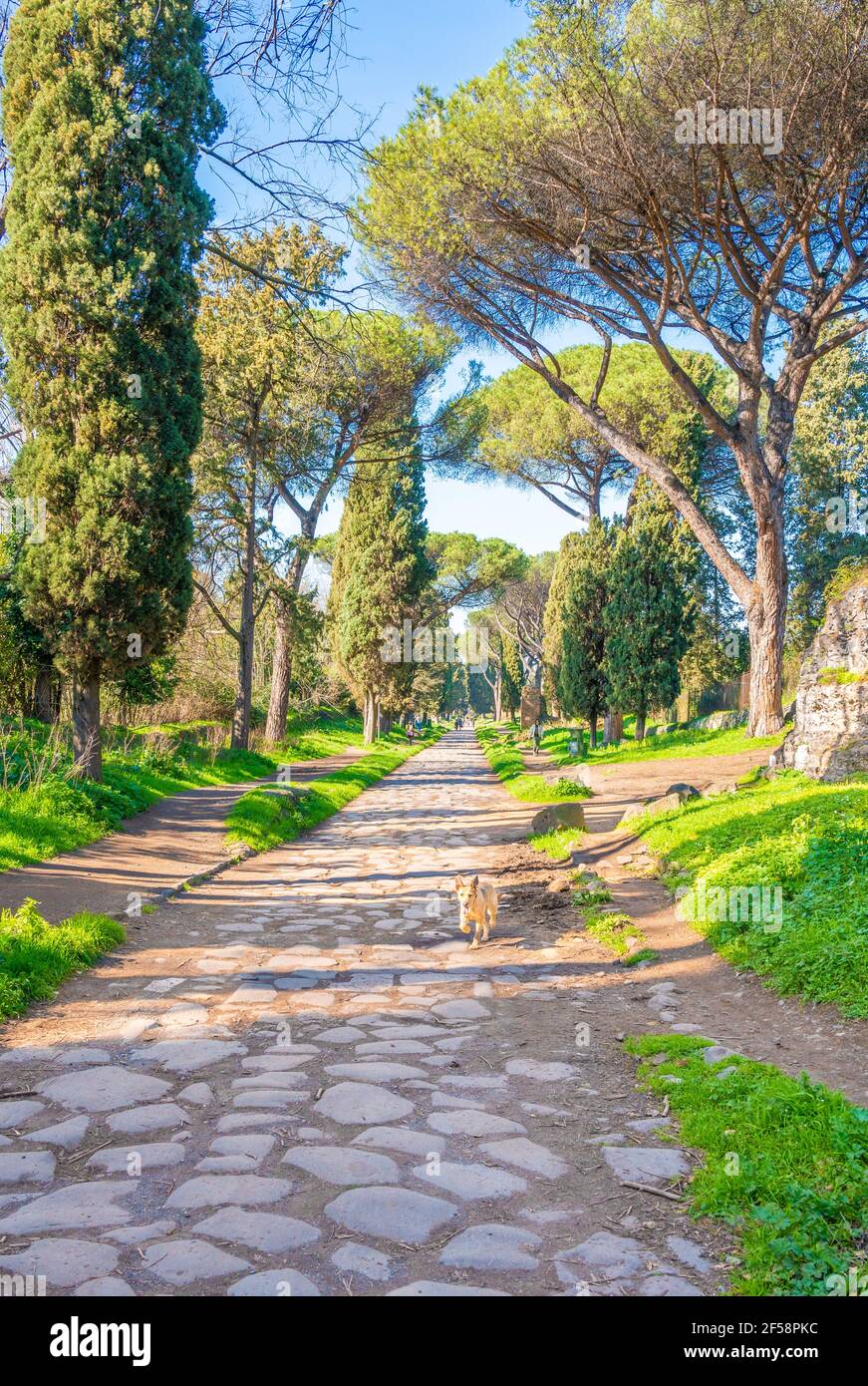 Rome (Italy) - The archeological ruins in the Appian Way of Roma (in italian: 'via Appia Antica'), the most important Roman road of the ancient empire Stock Photohttps://www.alamy.com/image-license-details/?v=1https://www.alamy.com/rome-italy-the-archeological-ruins-in-the-appian-way-of-roma-in-italian-via-appia-antica-the-most-important-roman-road-of-the-ancient-empire-image416315520.html
Rome (Italy) - The archeological ruins in the Appian Way of Roma (in italian: 'via Appia Antica'), the most important Roman road of the ancient empire Stock Photohttps://www.alamy.com/image-license-details/?v=1https://www.alamy.com/rome-italy-the-archeological-ruins-in-the-appian-way-of-roma-in-italian-via-appia-antica-the-most-important-roman-road-of-the-ancient-empire-image416315520.htmlRF2F58PKC–Rome (Italy) - The archeological ruins in the Appian Way of Roma (in italian: 'via Appia Antica'), the most important Roman road of the ancient empire
 Rome (Italy) - The archeological ruins in the Appian Way of Roma (in italian: 'via Appia Antica'), the most important Roman road of the ancient empire Stock Photohttps://www.alamy.com/image-license-details/?v=1https://www.alamy.com/rome-italy-the-archeological-ruins-in-the-appian-way-of-roma-in-italian-via-appia-antica-the-most-important-roman-road-of-the-ancient-empire-image416316867.html
Rome (Italy) - The archeological ruins in the Appian Way of Roma (in italian: 'via Appia Antica'), the most important Roman road of the ancient empire Stock Photohttps://www.alamy.com/image-license-details/?v=1https://www.alamy.com/rome-italy-the-archeological-ruins-in-the-appian-way-of-roma-in-italian-via-appia-antica-the-most-important-roman-road-of-the-ancient-empire-image416316867.htmlRF2F58TBF–Rome (Italy) - The archeological ruins in the Appian Way of Roma (in italian: 'via Appia Antica'), the most important Roman road of the ancient empire
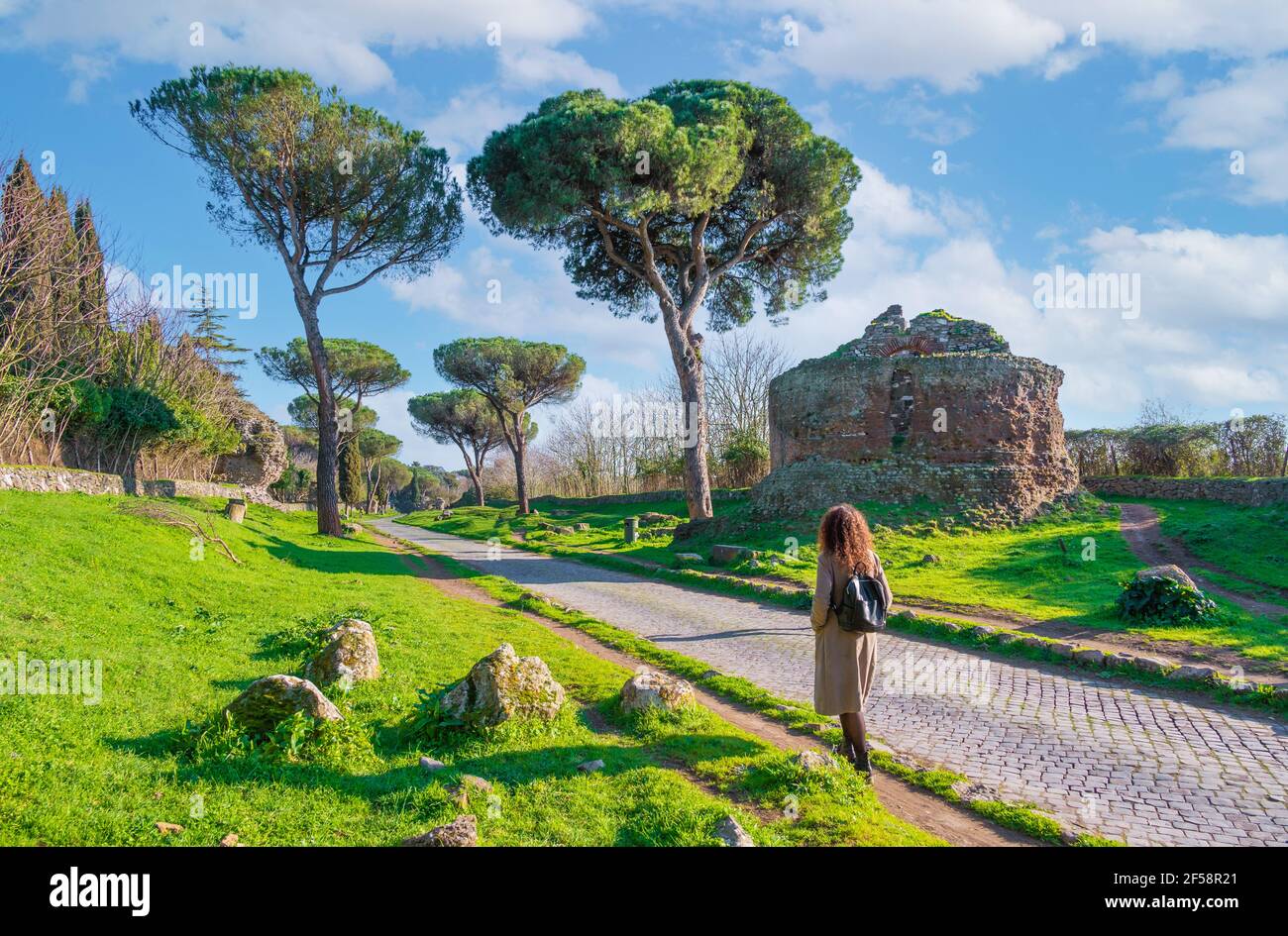 Rome (Italy) - The archeological ruins in the Appian Way of Roma (in italian: 'via Appia Antica'), the most important Roman road of the ancient empire Stock Photohttps://www.alamy.com/image-license-details/?v=1https://www.alamy.com/rome-italy-the-archeological-ruins-in-the-appian-way-of-roma-in-italian-via-appia-antica-the-most-important-roman-road-of-the-ancient-empire-image416315817.html
Rome (Italy) - The archeological ruins in the Appian Way of Roma (in italian: 'via Appia Antica'), the most important Roman road of the ancient empire Stock Photohttps://www.alamy.com/image-license-details/?v=1https://www.alamy.com/rome-italy-the-archeological-ruins-in-the-appian-way-of-roma-in-italian-via-appia-antica-the-most-important-roman-road-of-the-ancient-empire-image416315817.htmlRF2F58R21–Rome (Italy) - The archeological ruins in the Appian Way of Roma (in italian: 'via Appia Antica'), the most important Roman road of the ancient empire
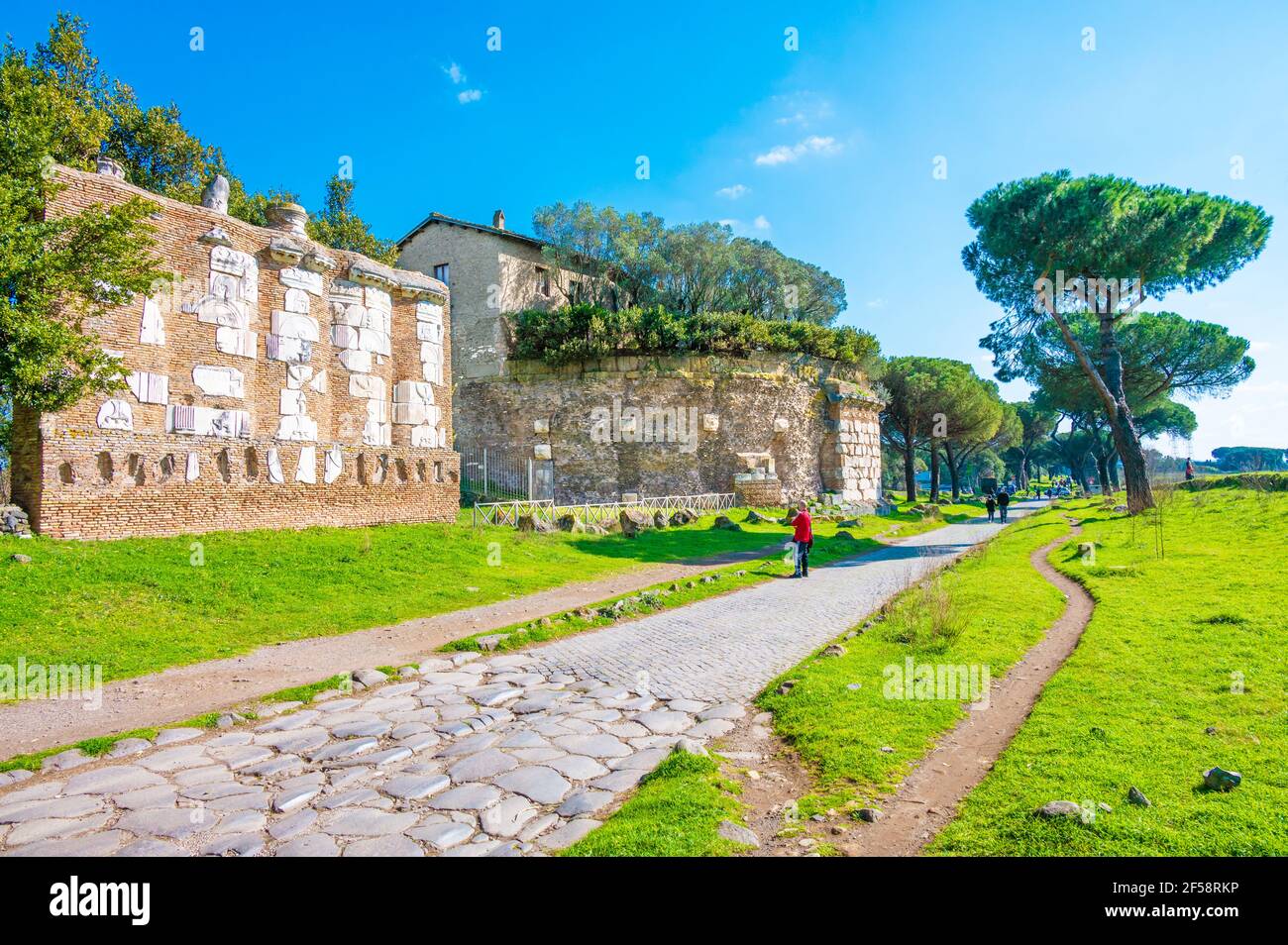 Rome (Italy) - The archeological ruins in the Appian Way of Roma (in italian: 'via Appia Antica'), the most important Roman road of the ancient empire Stock Photohttps://www.alamy.com/image-license-details/?v=1https://www.alamy.com/rome-italy-the-archeological-ruins-in-the-appian-way-of-roma-in-italian-via-appia-antica-the-most-important-roman-road-of-the-ancient-empire-image416316314.html
Rome (Italy) - The archeological ruins in the Appian Way of Roma (in italian: 'via Appia Antica'), the most important Roman road of the ancient empire Stock Photohttps://www.alamy.com/image-license-details/?v=1https://www.alamy.com/rome-italy-the-archeological-ruins-in-the-appian-way-of-roma-in-italian-via-appia-antica-the-most-important-roman-road-of-the-ancient-empire-image416316314.htmlRF2F58RKP–Rome (Italy) - The archeological ruins in the Appian Way of Roma (in italian: 'via Appia Antica'), the most important Roman road of the ancient empire
 Rome (Italy) - The archeological ruins in the Appian Way of Roma (in italian: 'via Appia Antica'), the most important Roman road of the ancient empire Stock Photohttps://www.alamy.com/image-license-details/?v=1https://www.alamy.com/rome-italy-the-archeological-ruins-in-the-appian-way-of-roma-in-italian-via-appia-antica-the-most-important-roman-road-of-the-ancient-empire-image416316552.html
Rome (Italy) - The archeological ruins in the Appian Way of Roma (in italian: 'via Appia Antica'), the most important Roman road of the ancient empire Stock Photohttps://www.alamy.com/image-license-details/?v=1https://www.alamy.com/rome-italy-the-archeological-ruins-in-the-appian-way-of-roma-in-italian-via-appia-antica-the-most-important-roman-road-of-the-ancient-empire-image416316552.htmlRF2F58T08–Rome (Italy) - The archeological ruins in the Appian Way of Roma (in italian: 'via Appia Antica'), the most important Roman road of the ancient empire
 Rome (Italy) - The archeological ruins in the Appian Way of Roma (in italian: 'via Appia Antica'), the most important Roman road of the ancient empire Stock Photohttps://www.alamy.com/image-license-details/?v=1https://www.alamy.com/rome-italy-the-archeological-ruins-in-the-appian-way-of-roma-in-italian-via-appia-antica-the-most-important-roman-road-of-the-ancient-empire-image416315661.html
Rome (Italy) - The archeological ruins in the Appian Way of Roma (in italian: 'via Appia Antica'), the most important Roman road of the ancient empire Stock Photohttps://www.alamy.com/image-license-details/?v=1https://www.alamy.com/rome-italy-the-archeological-ruins-in-the-appian-way-of-roma-in-italian-via-appia-antica-the-most-important-roman-road-of-the-ancient-empire-image416315661.htmlRF2F58PTD–Rome (Italy) - The archeological ruins in the Appian Way of Roma (in italian: 'via Appia Antica'), the most important Roman road of the ancient empire
 Rome (Italy) - The archeological ruins in the Appian Way of Roma (in italian: 'via Appia Antica'), the most important Roman road of the ancient empire Stock Photohttps://www.alamy.com/image-license-details/?v=1https://www.alamy.com/rome-italy-the-archeological-ruins-in-the-appian-way-of-roma-in-italian-via-appia-antica-the-most-important-roman-road-of-the-ancient-empire-image416316223.html
Rome (Italy) - The archeological ruins in the Appian Way of Roma (in italian: 'via Appia Antica'), the most important Roman road of the ancient empire Stock Photohttps://www.alamy.com/image-license-details/?v=1https://www.alamy.com/rome-italy-the-archeological-ruins-in-the-appian-way-of-roma-in-italian-via-appia-antica-the-most-important-roman-road-of-the-ancient-empire-image416316223.htmlRF2F58RGF–Rome (Italy) - The archeological ruins in the Appian Way of Roma (in italian: 'via Appia Antica'), the most important Roman road of the ancient empire
 Rome (Italy) - The archeological ruins in the Appian Way of Roma (in italian: 'via Appia Antica'), the most important Roman road of the ancient empire Stock Photohttps://www.alamy.com/image-license-details/?v=1https://www.alamy.com/rome-italy-the-archeological-ruins-in-the-appian-way-of-roma-in-italian-via-appia-antica-the-most-important-roman-road-of-the-ancient-empire-image416315956.html
Rome (Italy) - The archeological ruins in the Appian Way of Roma (in italian: 'via Appia Antica'), the most important Roman road of the ancient empire Stock Photohttps://www.alamy.com/image-license-details/?v=1https://www.alamy.com/rome-italy-the-archeological-ruins-in-the-appian-way-of-roma-in-italian-via-appia-antica-the-most-important-roman-road-of-the-ancient-empire-image416315956.htmlRF2F58R70–Rome (Italy) - The archeological ruins in the Appian Way of Roma (in italian: 'via Appia Antica'), the most important Roman road of the ancient empire
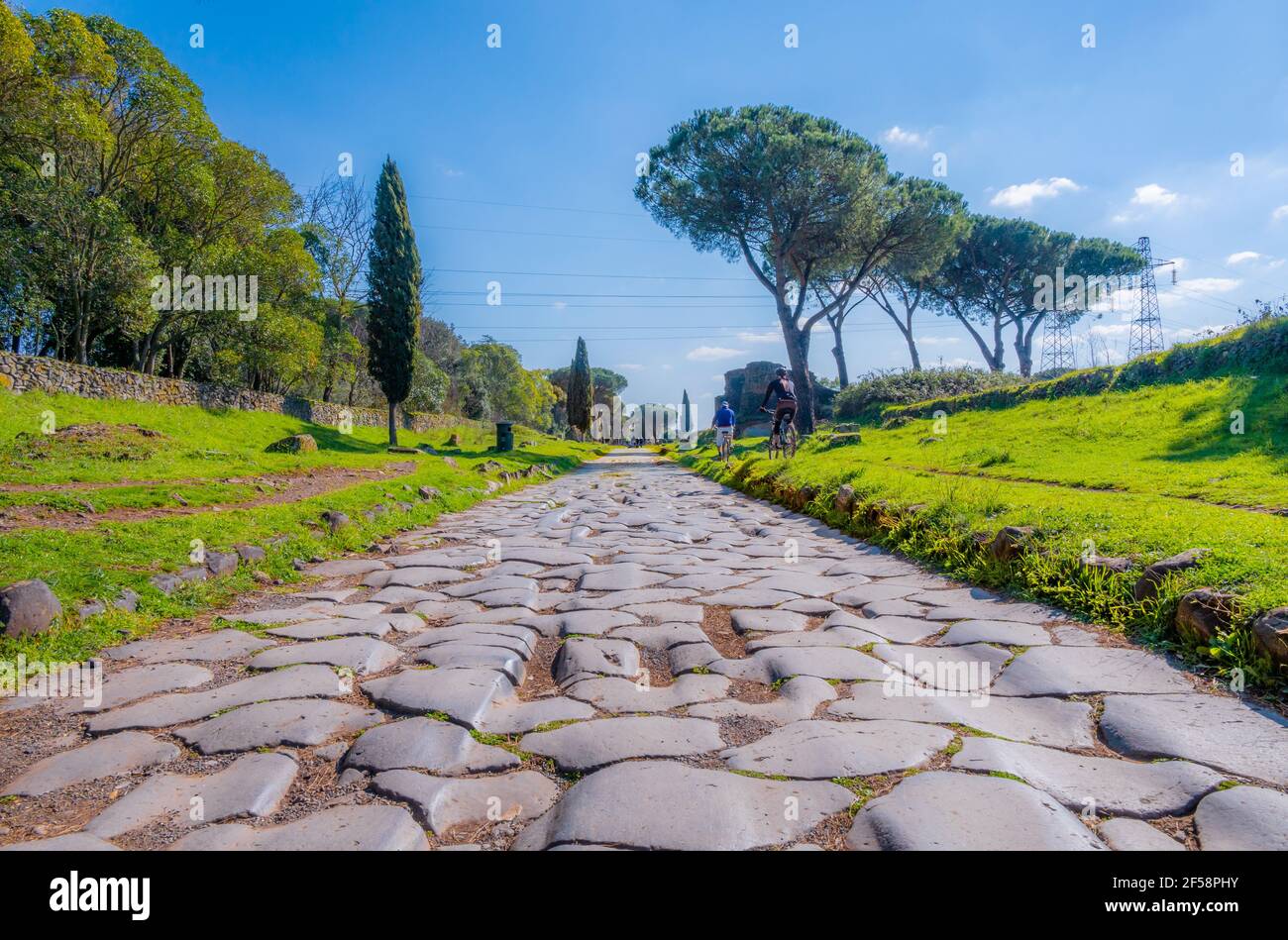 Rome (Italy) - The archeological ruins in the Appian Way of Roma (in italian: 'via Appia Antica'), the most important Roman road of the ancient empire Stock Photohttps://www.alamy.com/image-license-details/?v=1https://www.alamy.com/rome-italy-the-archeological-ruins-in-the-appian-way-of-roma-in-italian-via-appia-antica-the-most-important-roman-road-of-the-ancient-empire-image416315479.html
Rome (Italy) - The archeological ruins in the Appian Way of Roma (in italian: 'via Appia Antica'), the most important Roman road of the ancient empire Stock Photohttps://www.alamy.com/image-license-details/?v=1https://www.alamy.com/rome-italy-the-archeological-ruins-in-the-appian-way-of-roma-in-italian-via-appia-antica-the-most-important-roman-road-of-the-ancient-empire-image416315479.htmlRF2F58PHY–Rome (Italy) - The archeological ruins in the Appian Way of Roma (in italian: 'via Appia Antica'), the most important Roman road of the ancient empire
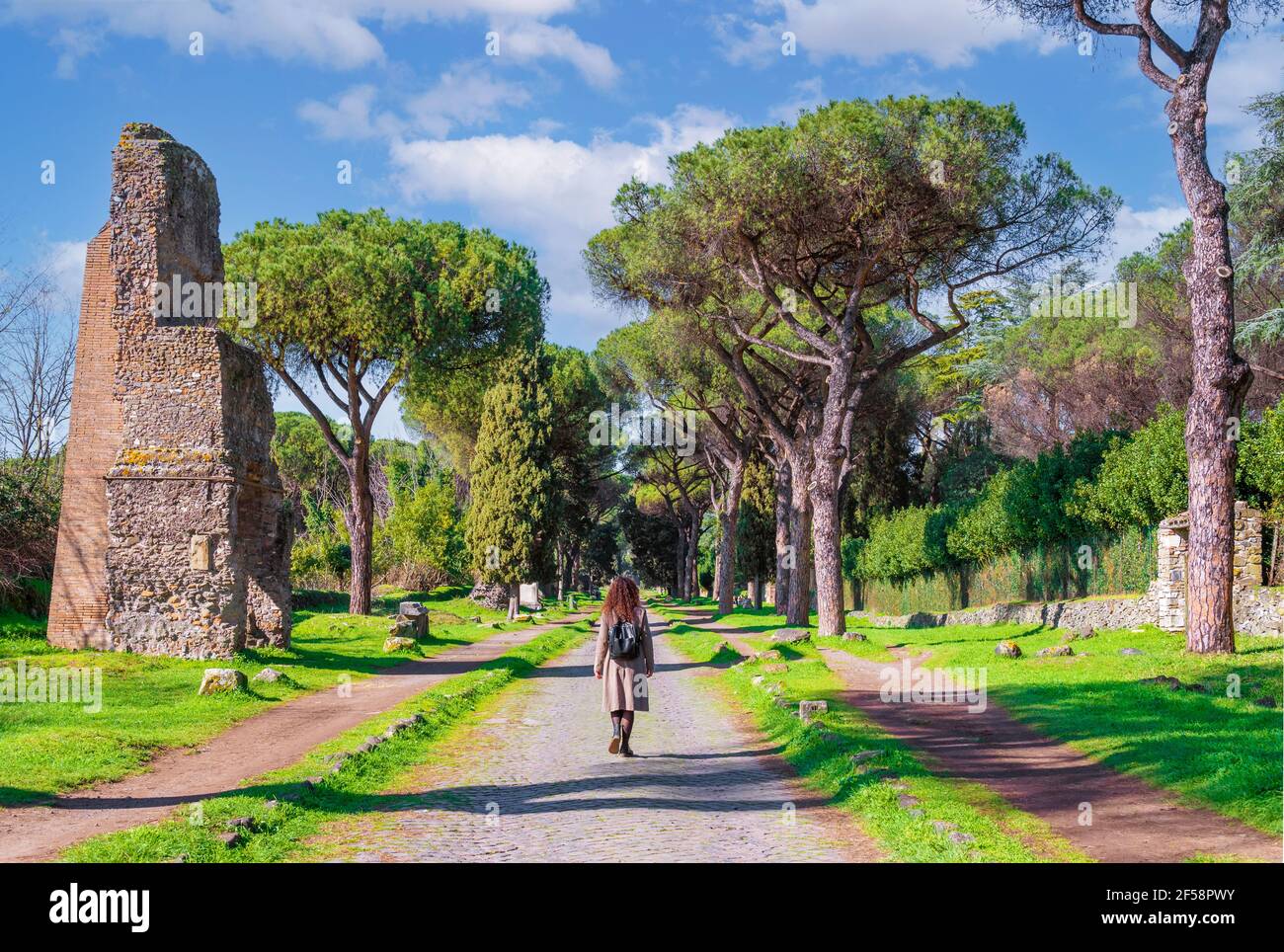 Rome (Italy) - The archeological ruins in the Appian Way of Roma (in italian: 'via Appia Antica'), the most important Roman road of the ancient empire Stock Photohttps://www.alamy.com/image-license-details/?v=1https://www.alamy.com/rome-italy-the-archeological-ruins-in-the-appian-way-of-roma-in-italian-via-appia-antica-the-most-important-roman-road-of-the-ancient-empire-image416315703.html
Rome (Italy) - The archeological ruins in the Appian Way of Roma (in italian: 'via Appia Antica'), the most important Roman road of the ancient empire Stock Photohttps://www.alamy.com/image-license-details/?v=1https://www.alamy.com/rome-italy-the-archeological-ruins-in-the-appian-way-of-roma-in-italian-via-appia-antica-the-most-important-roman-road-of-the-ancient-empire-image416315703.htmlRF2F58PWY–Rome (Italy) - The archeological ruins in the Appian Way of Roma (in italian: 'via Appia Antica'), the most important Roman road of the ancient empire